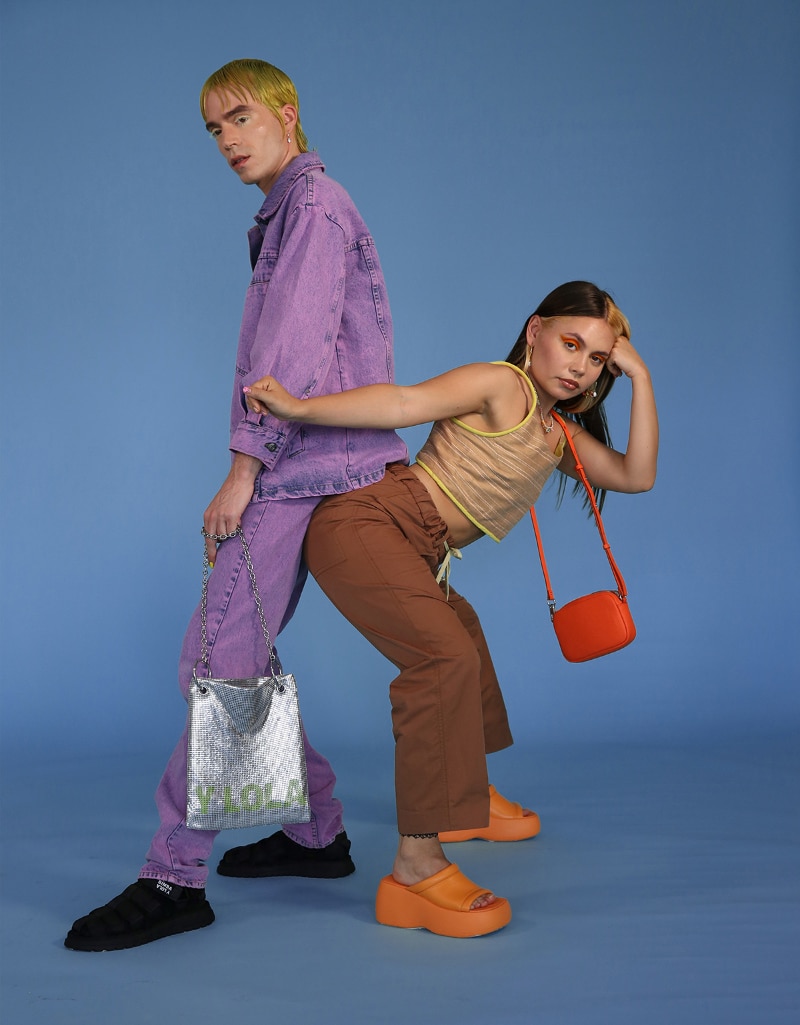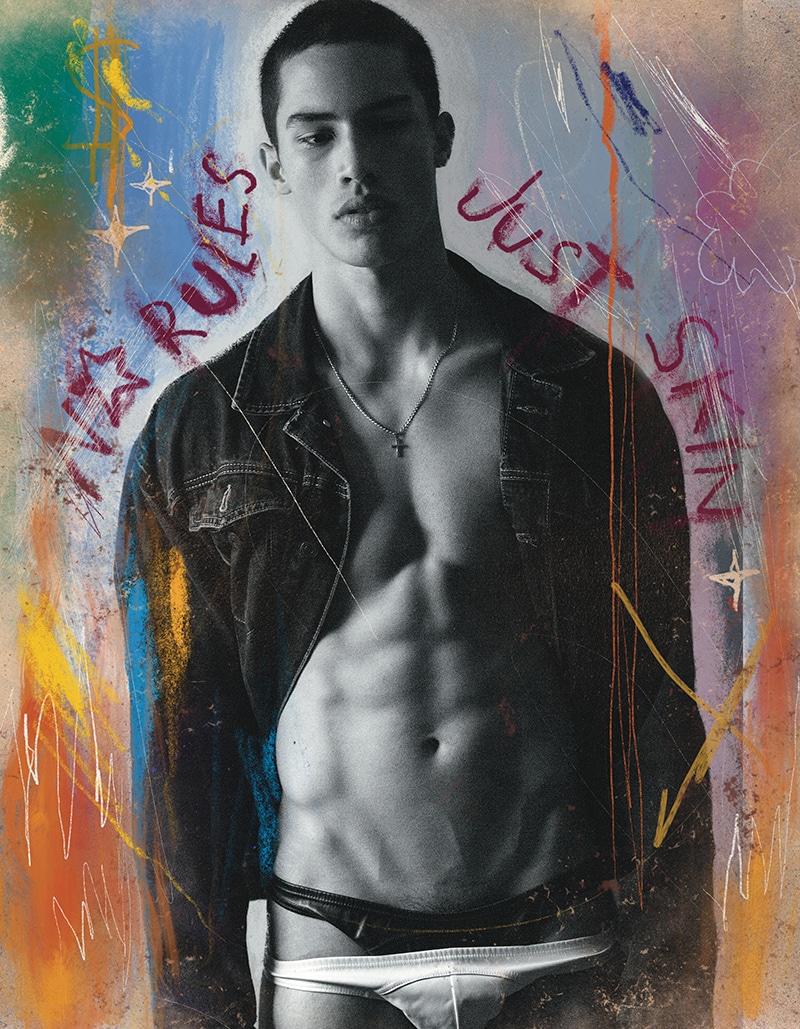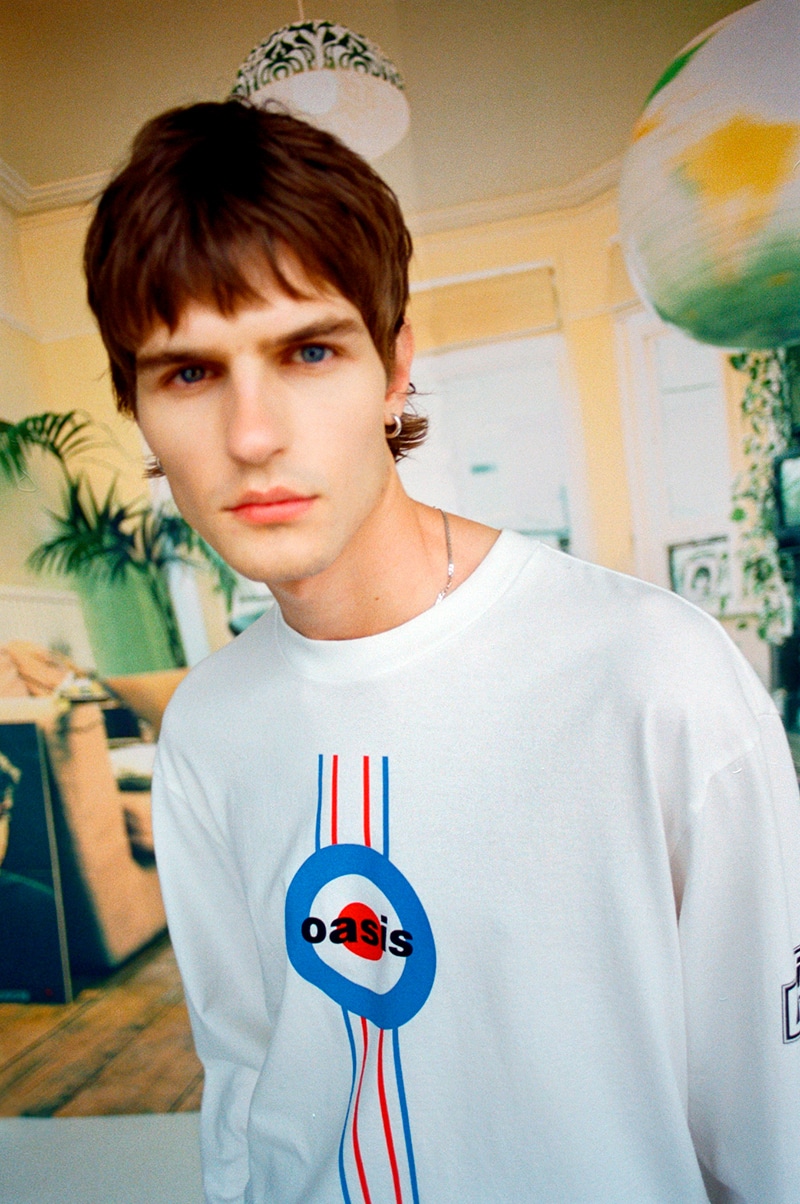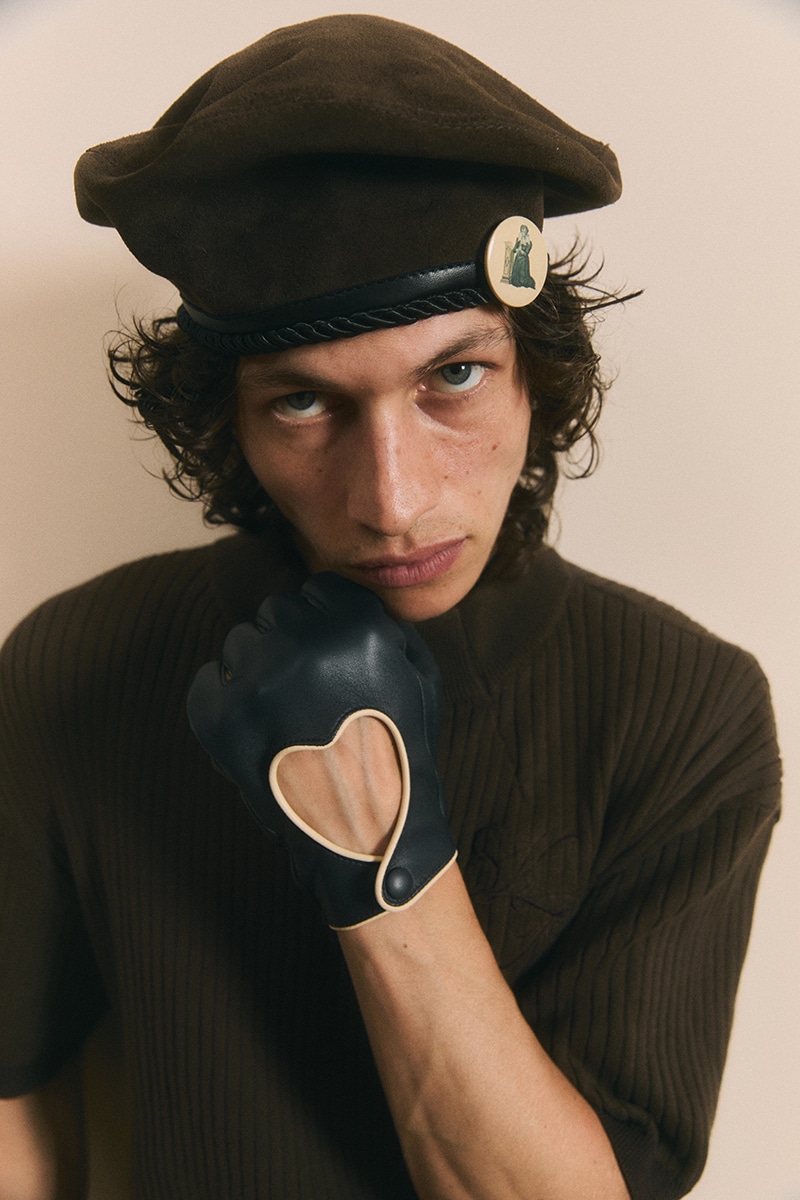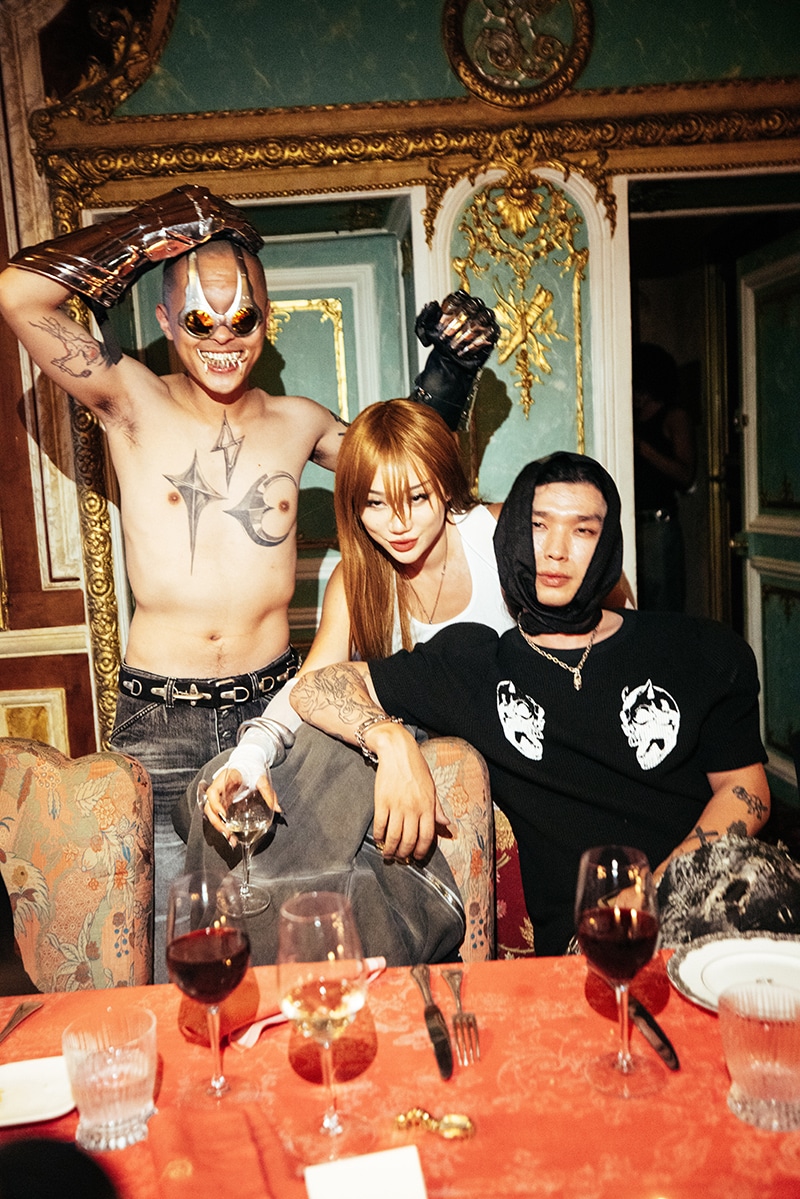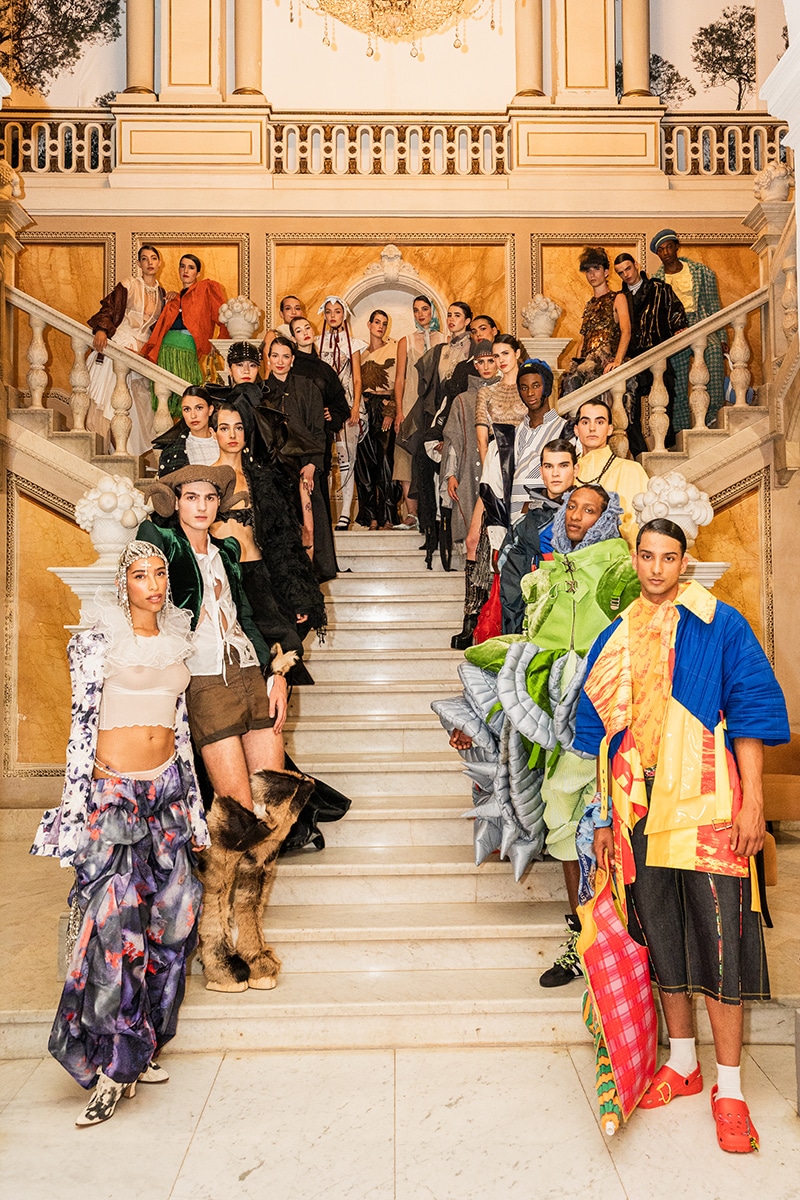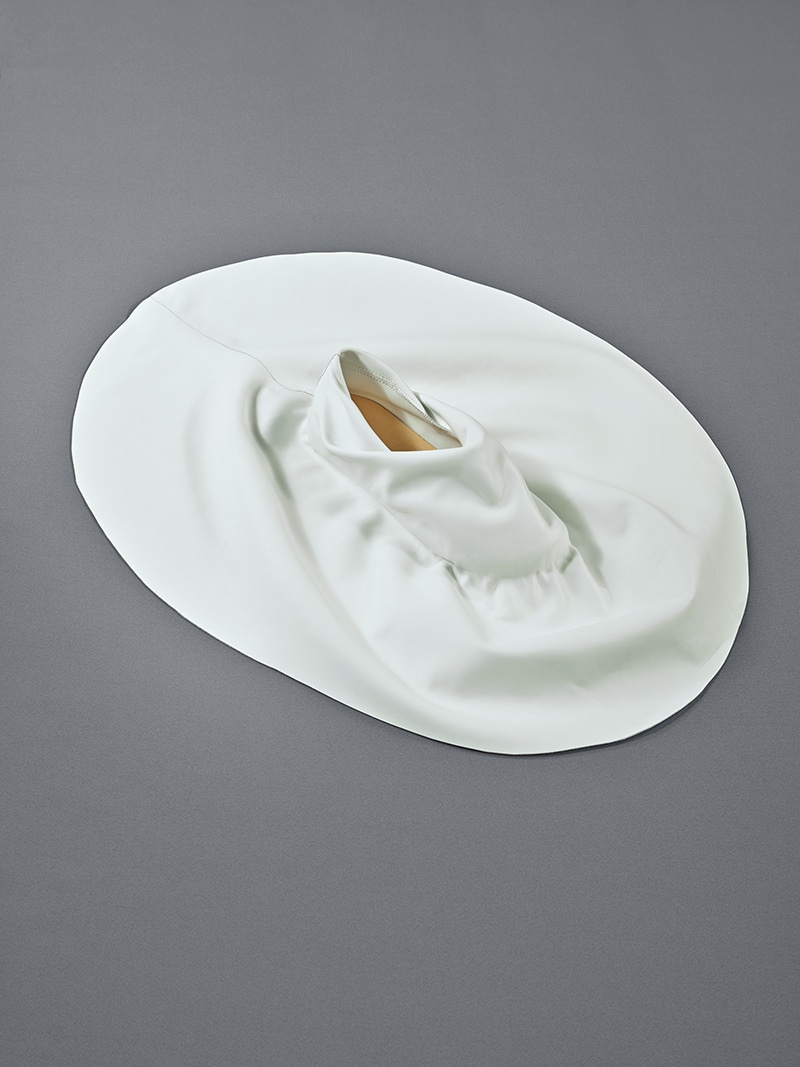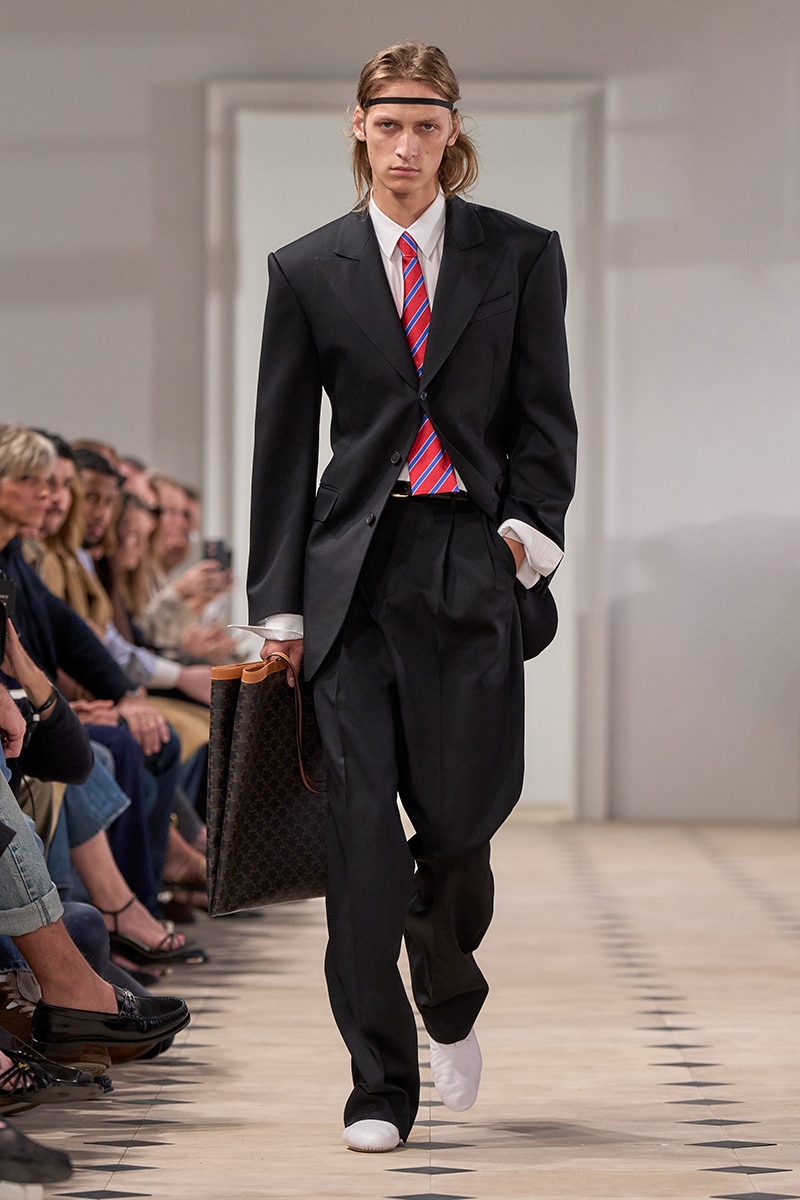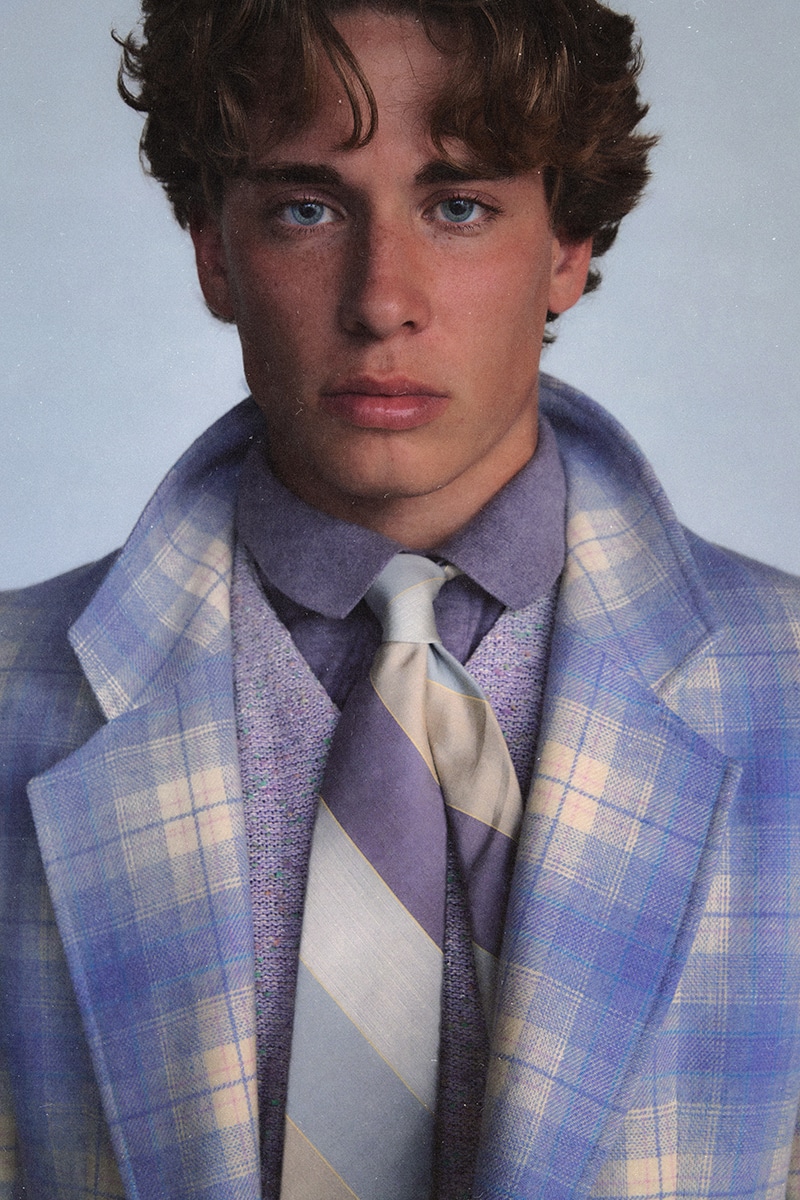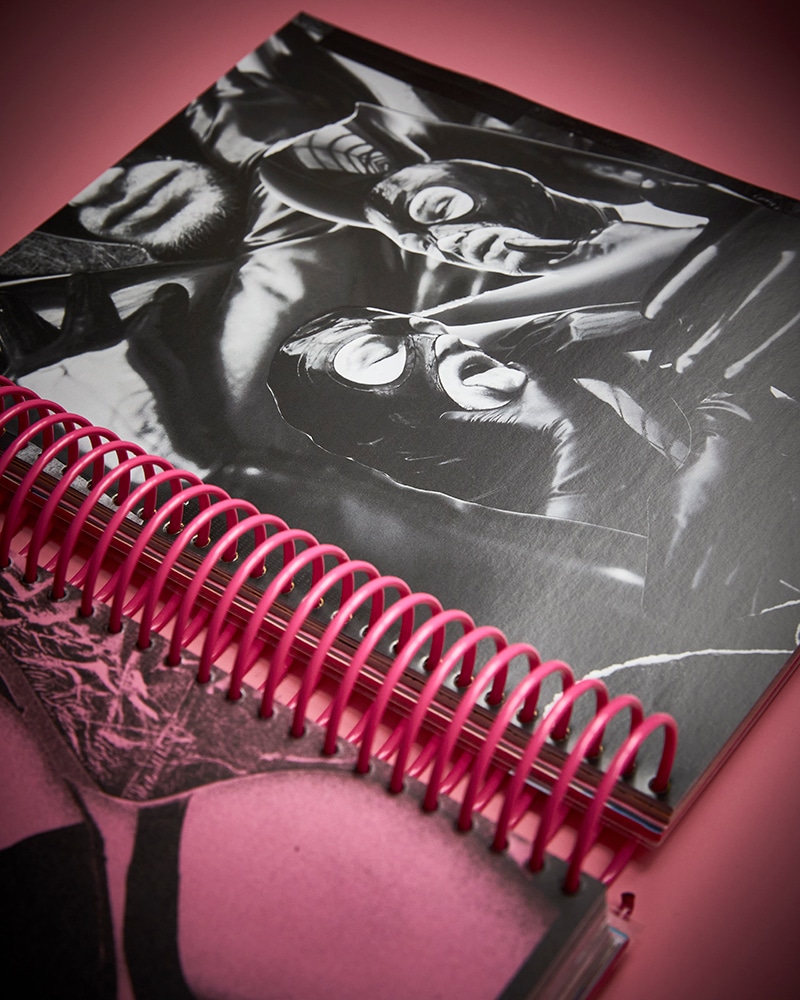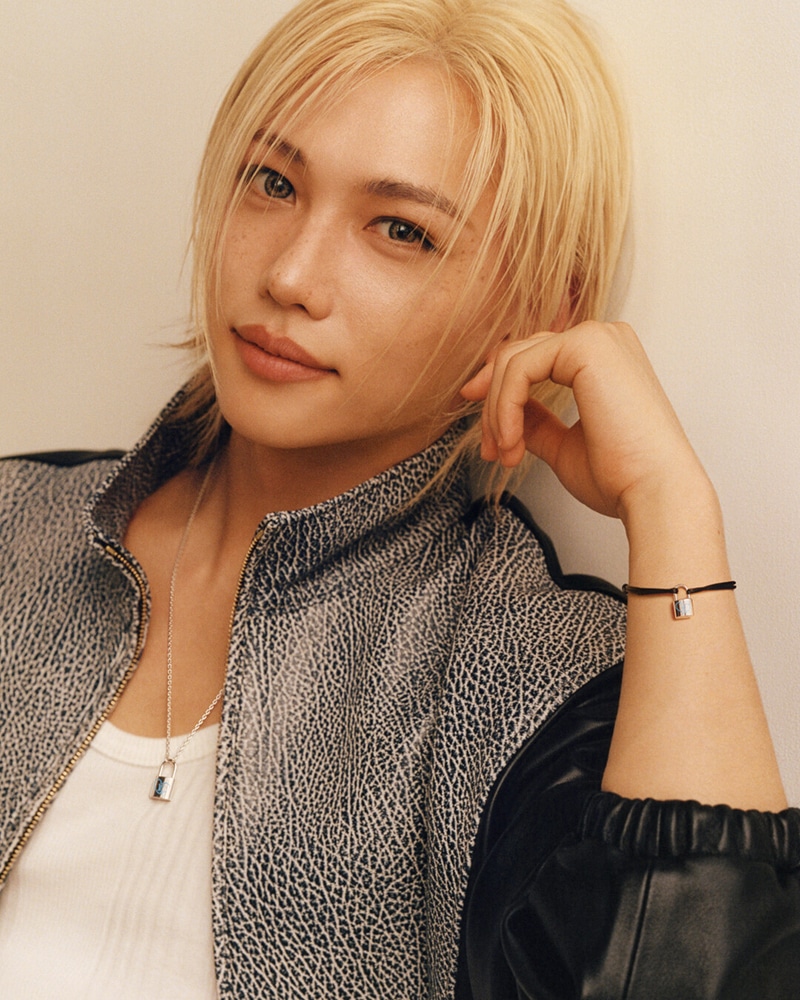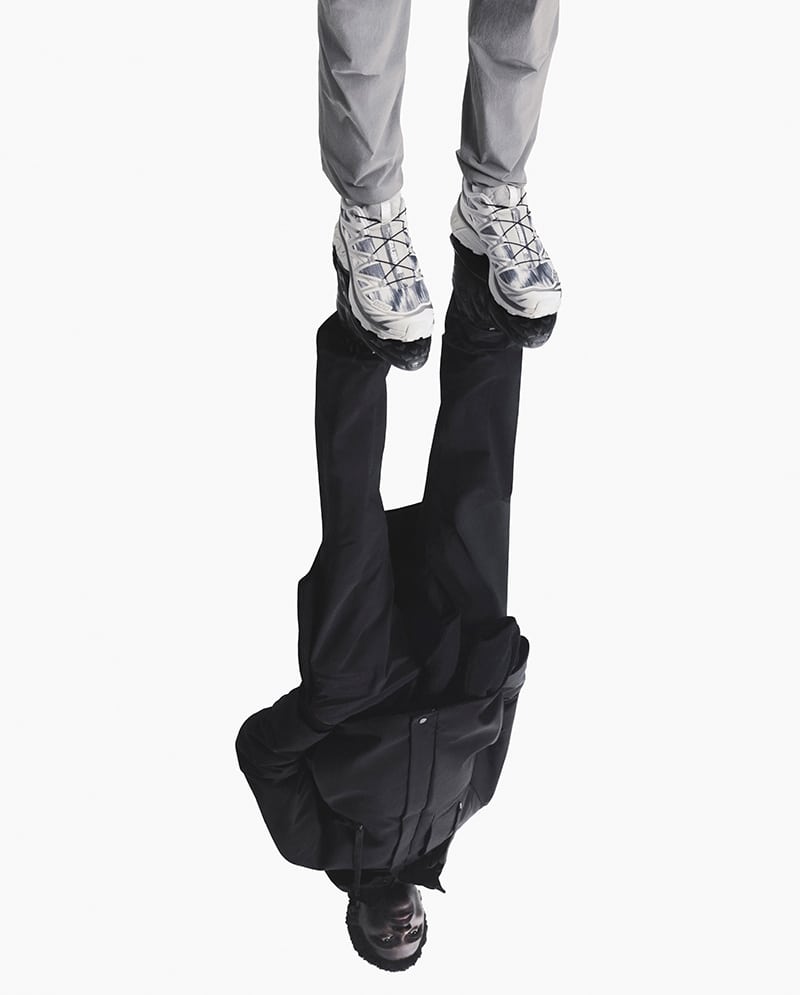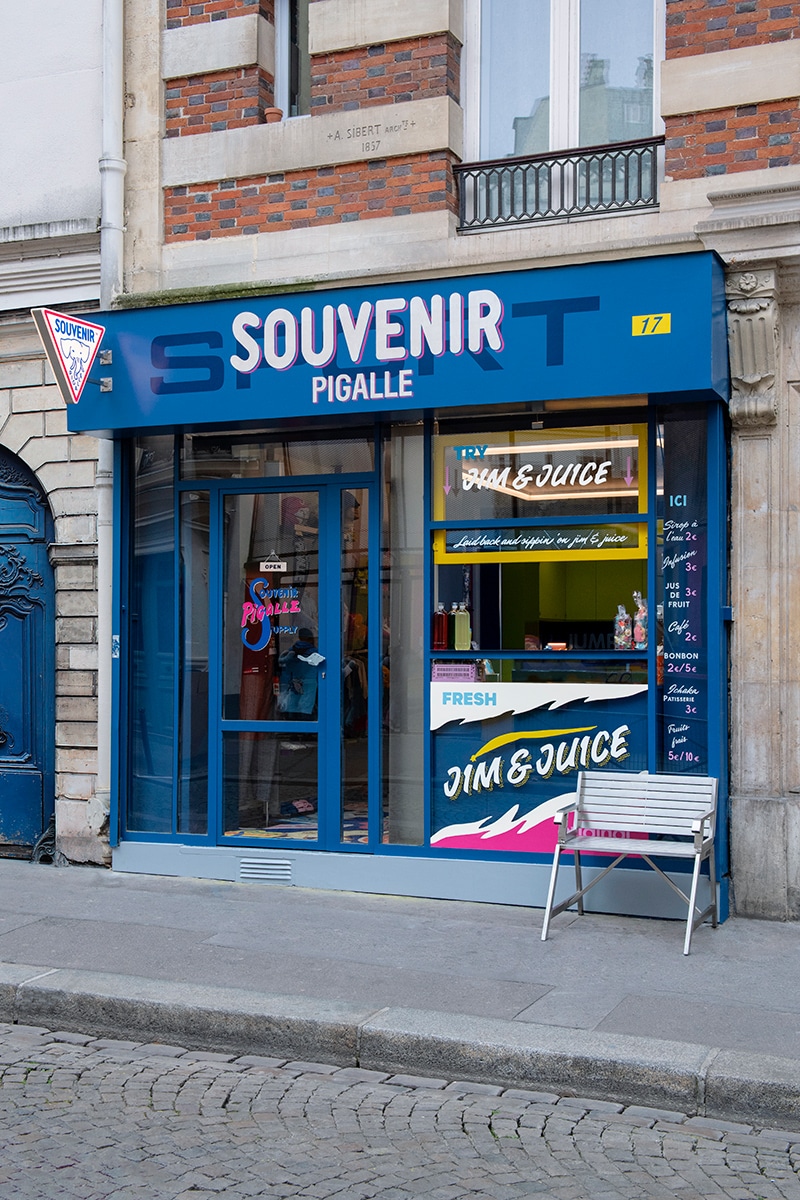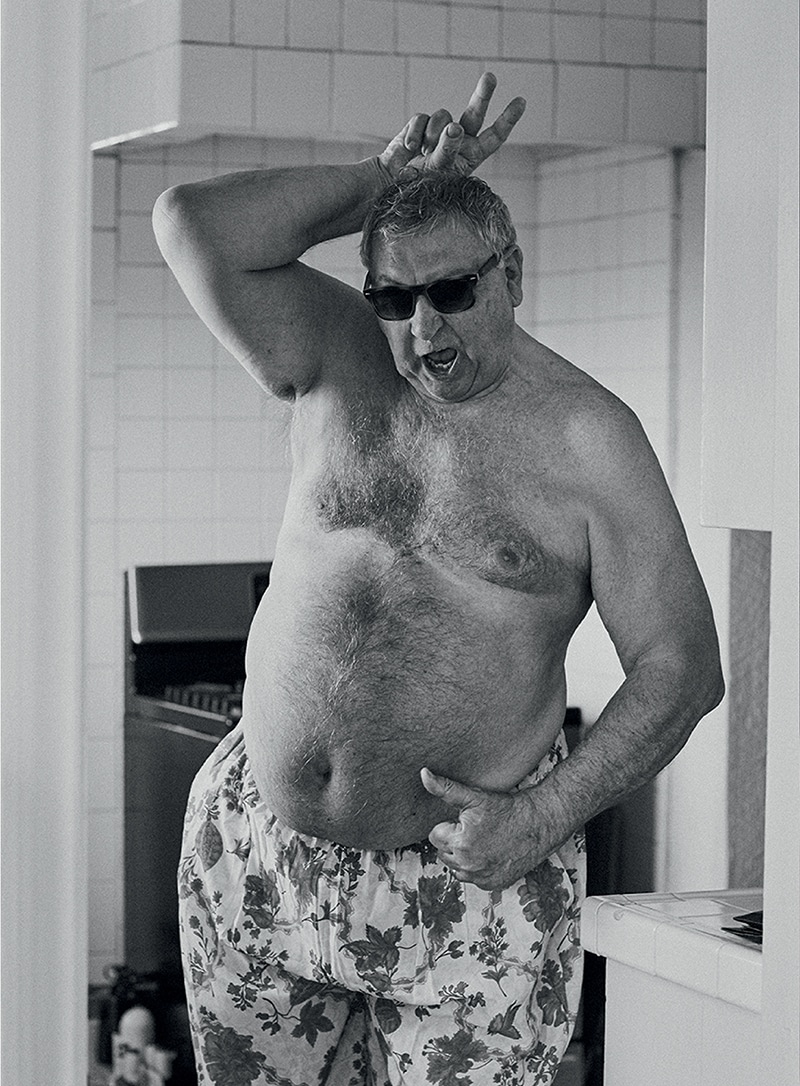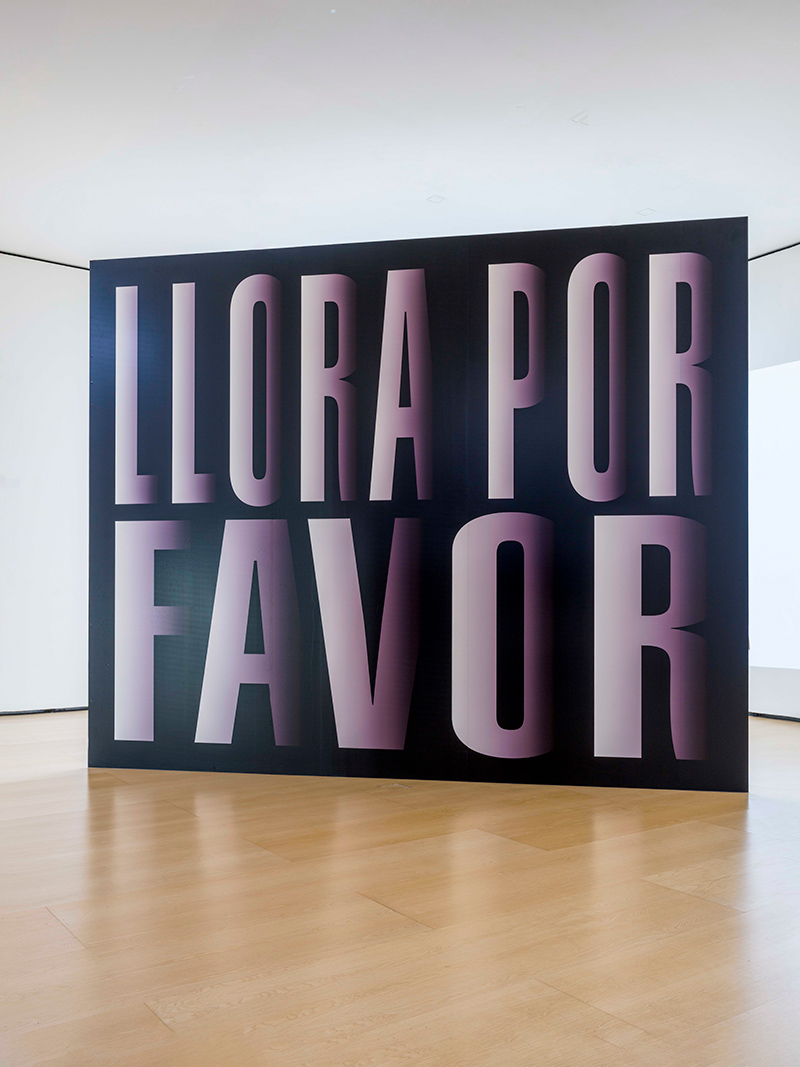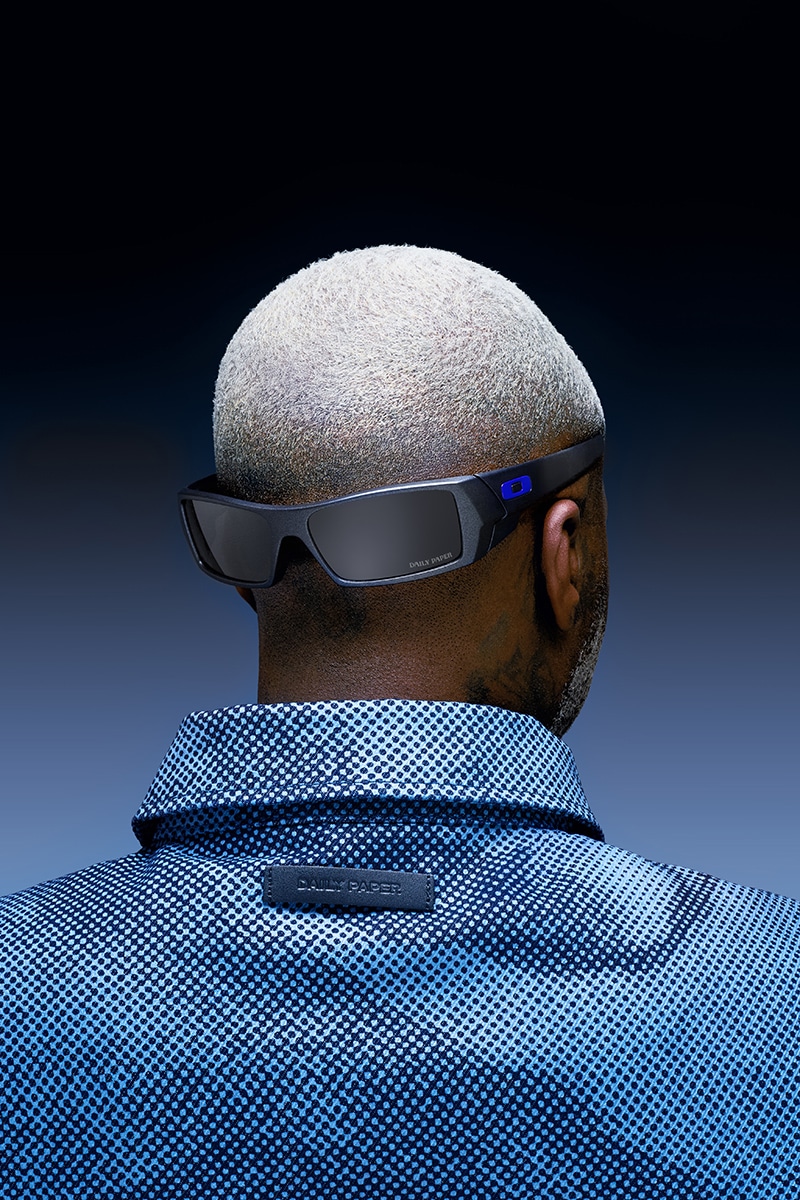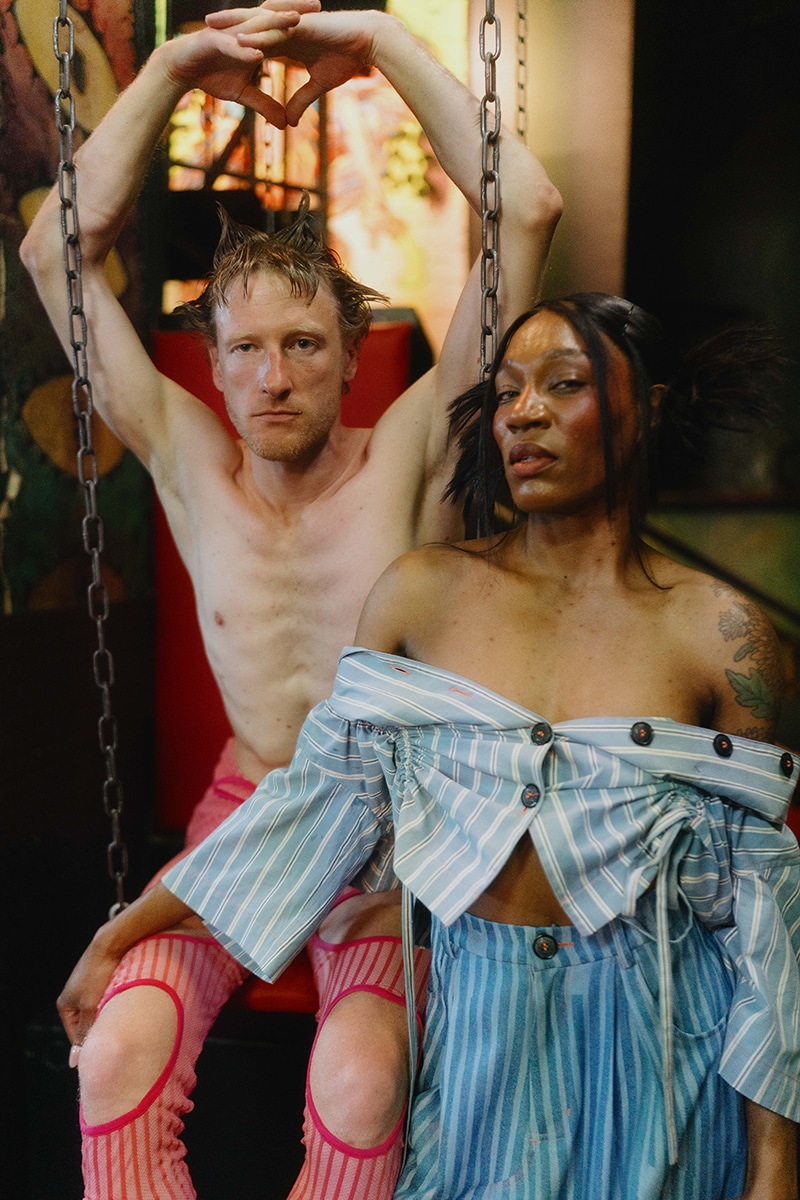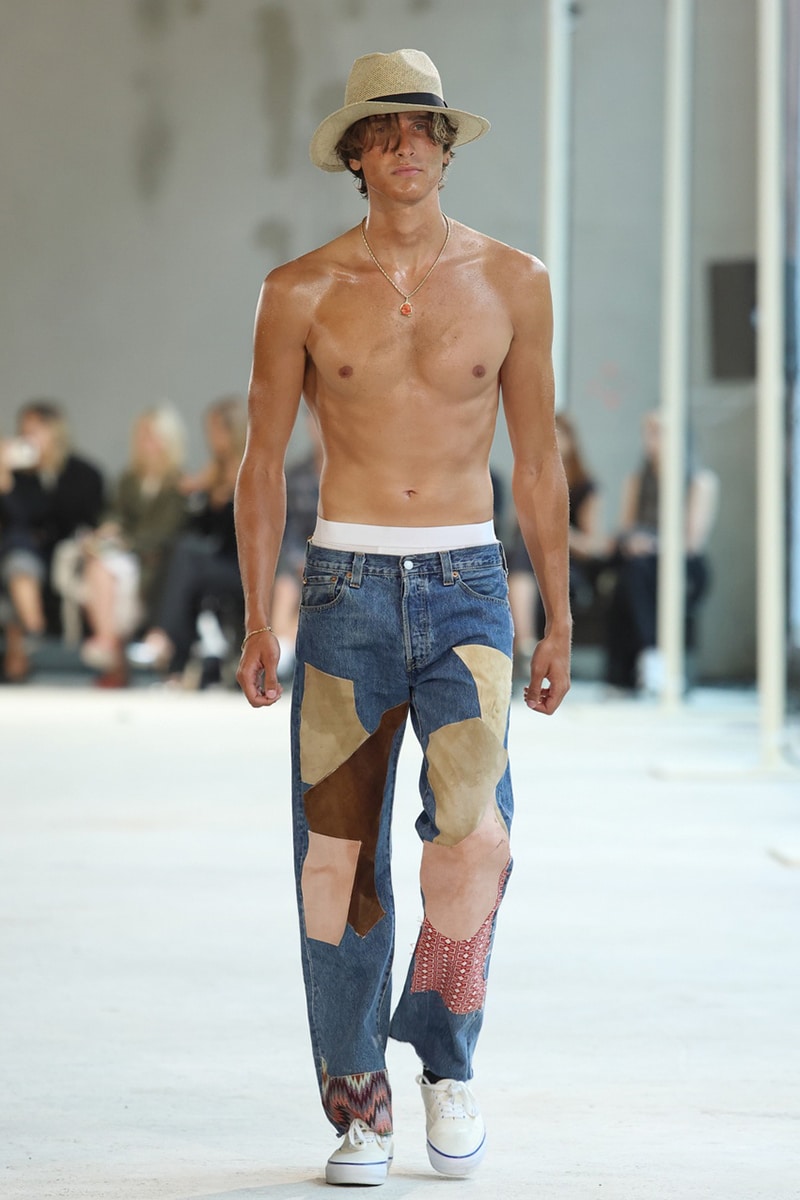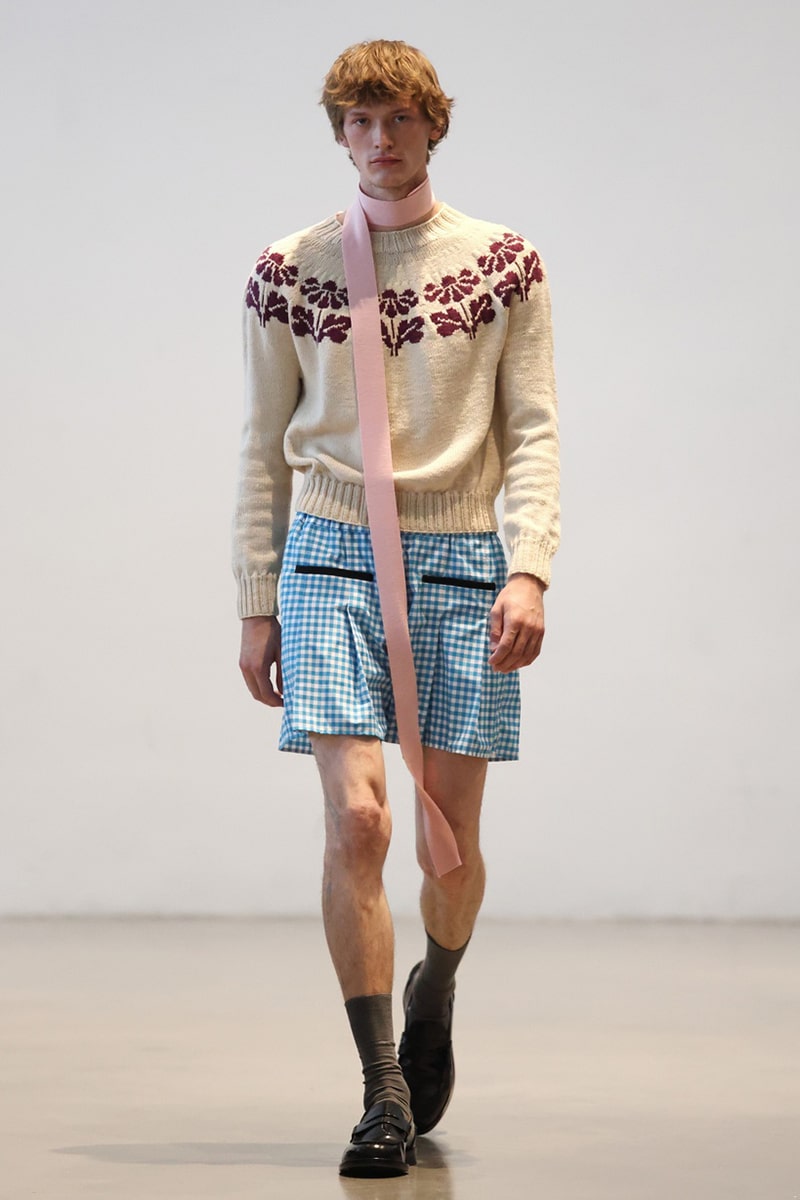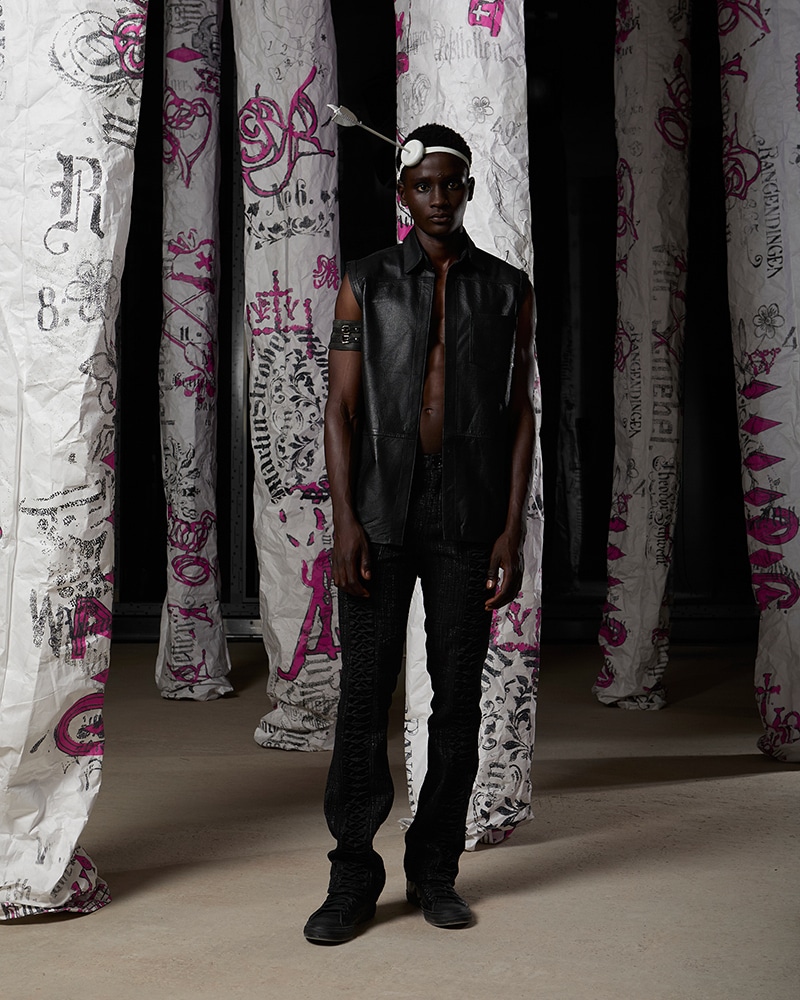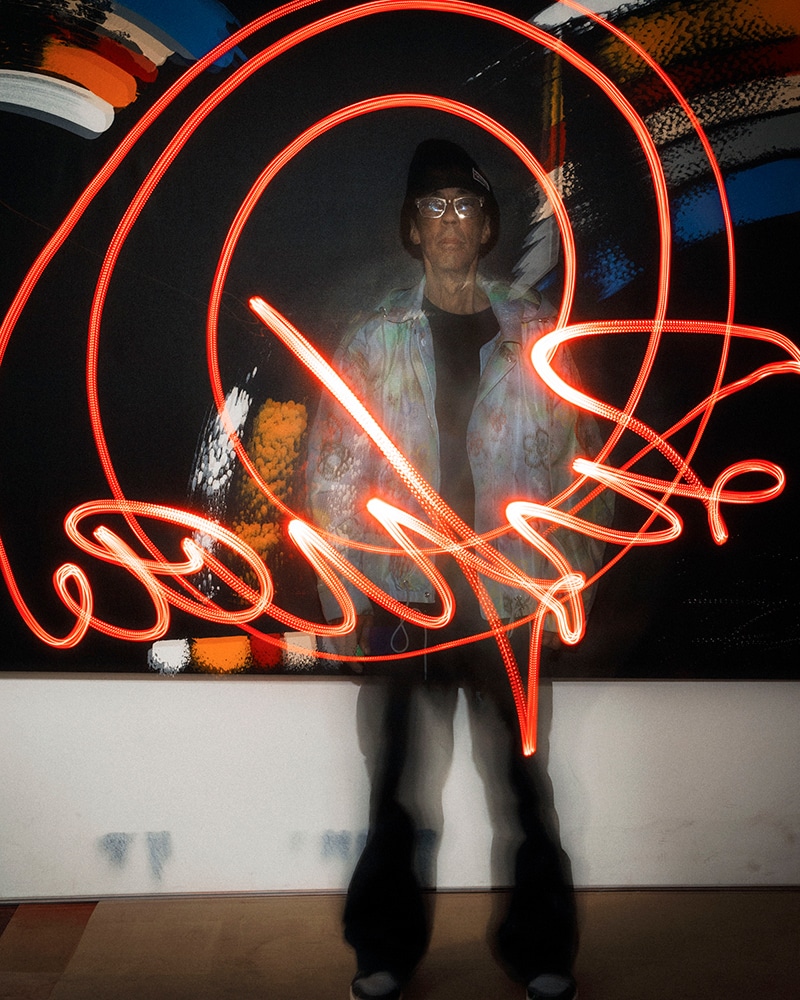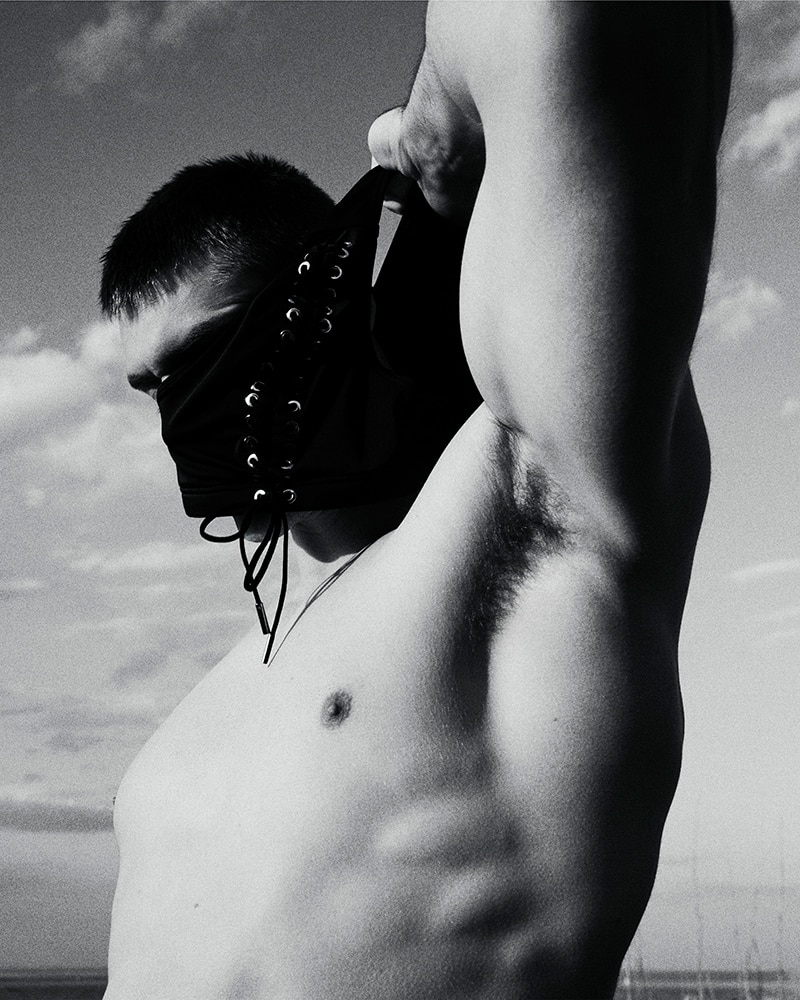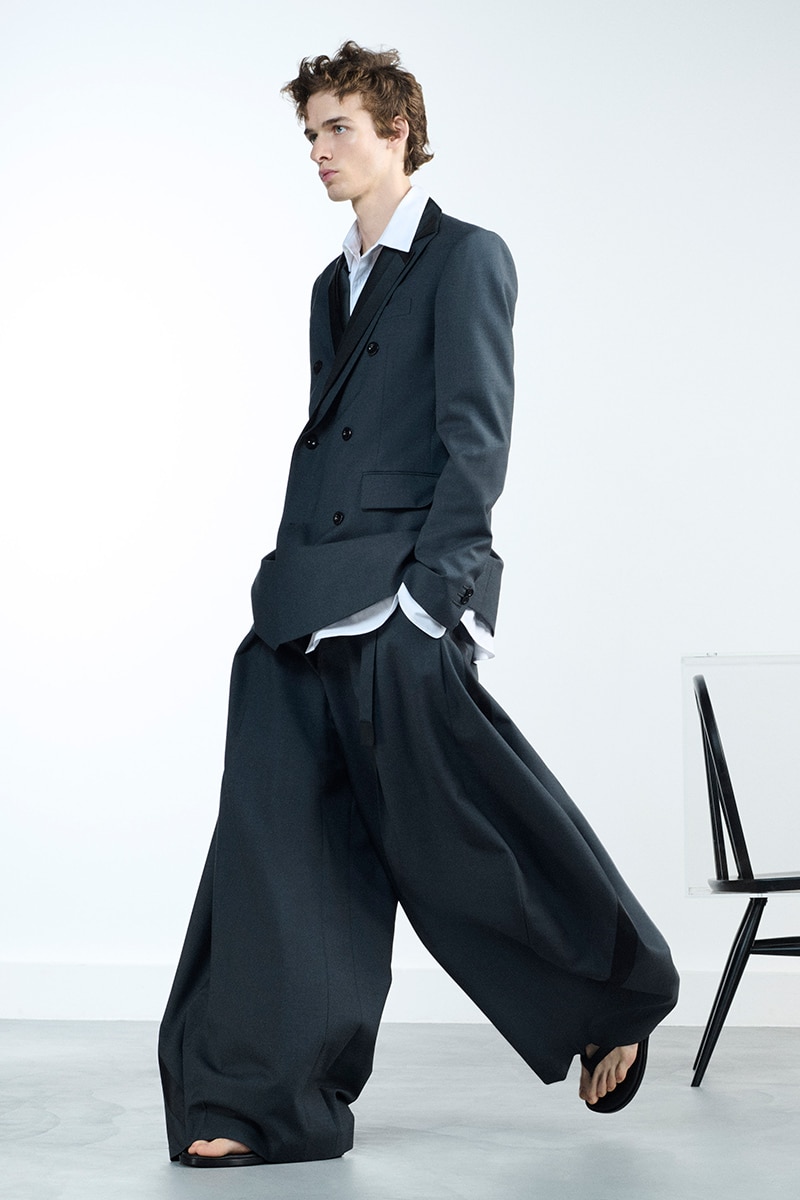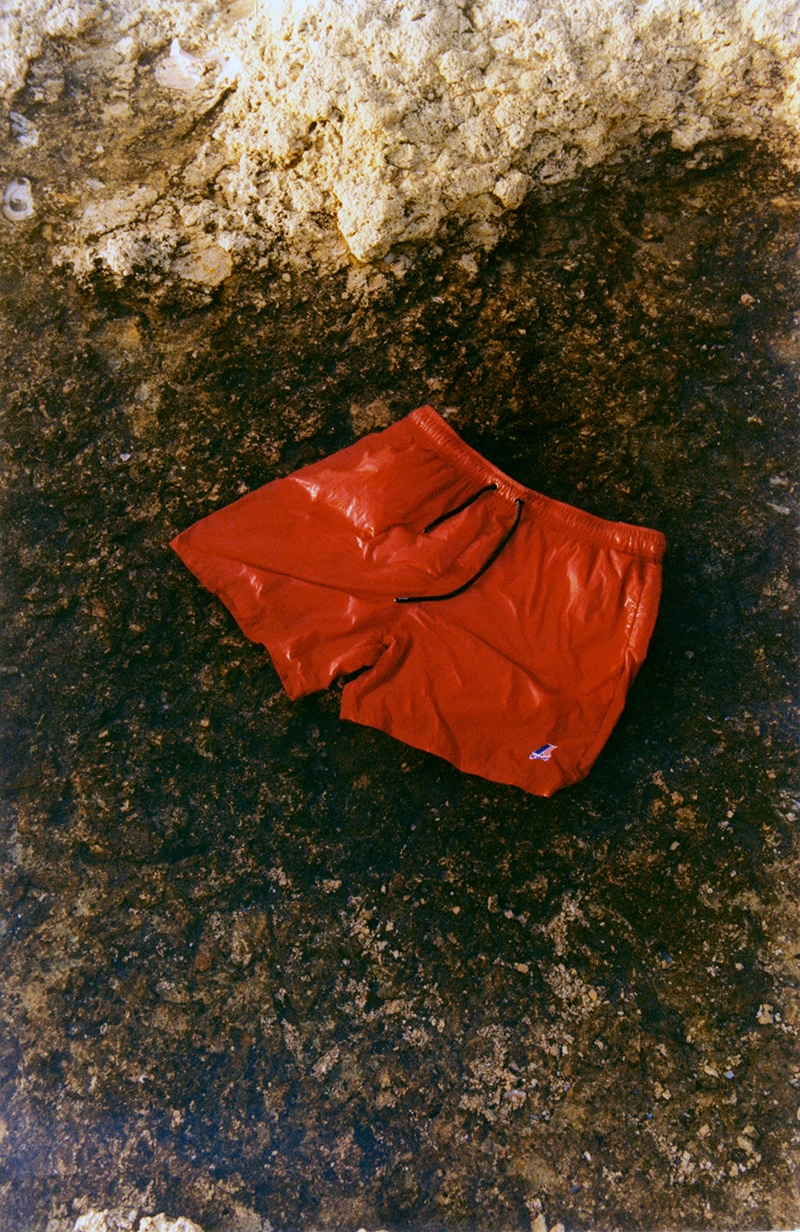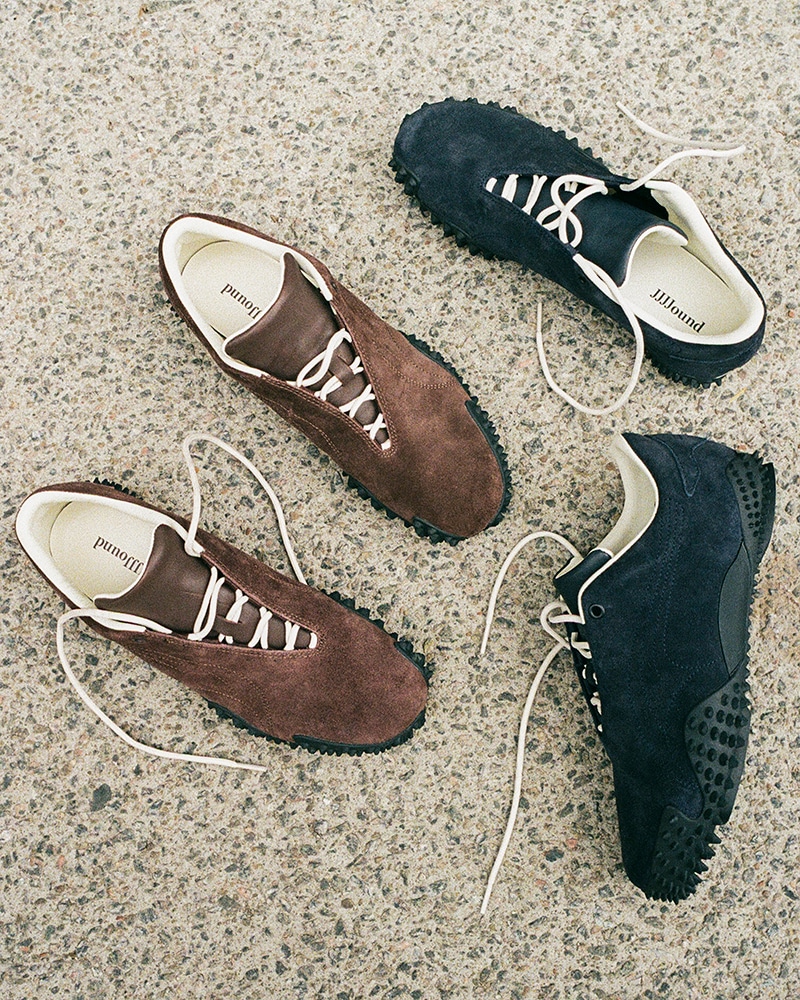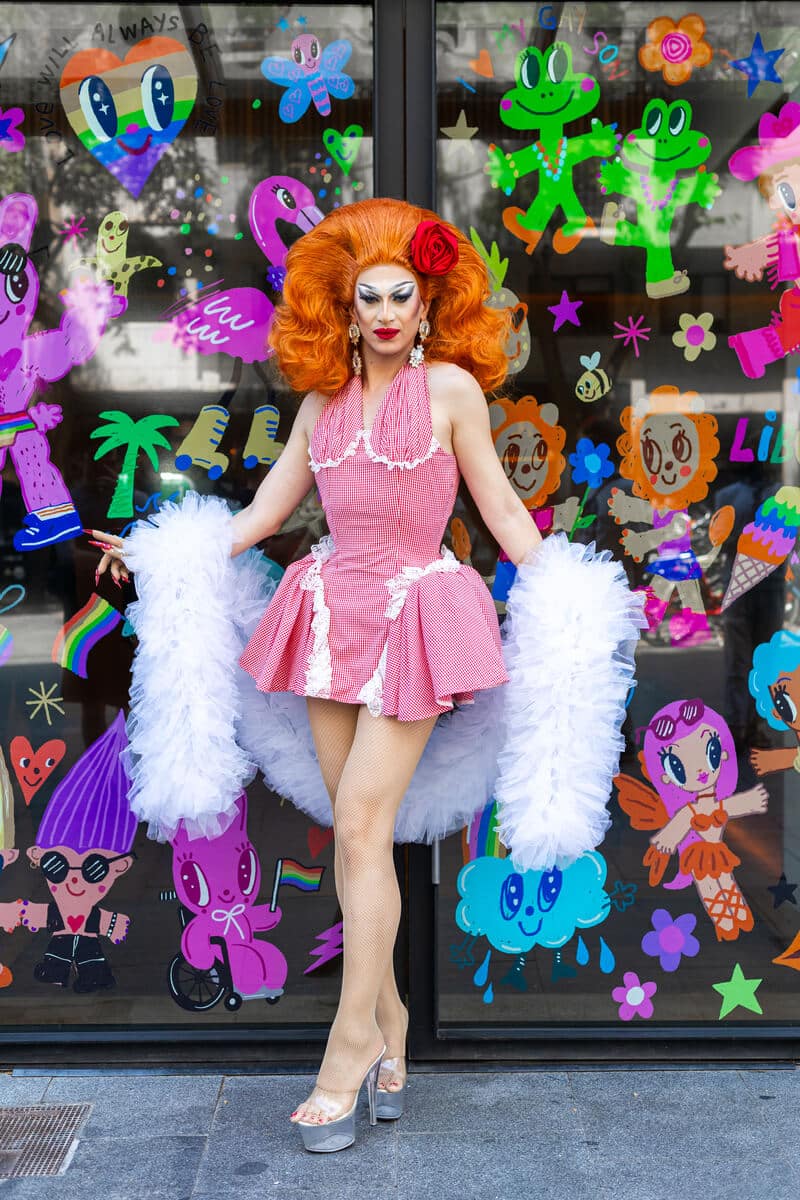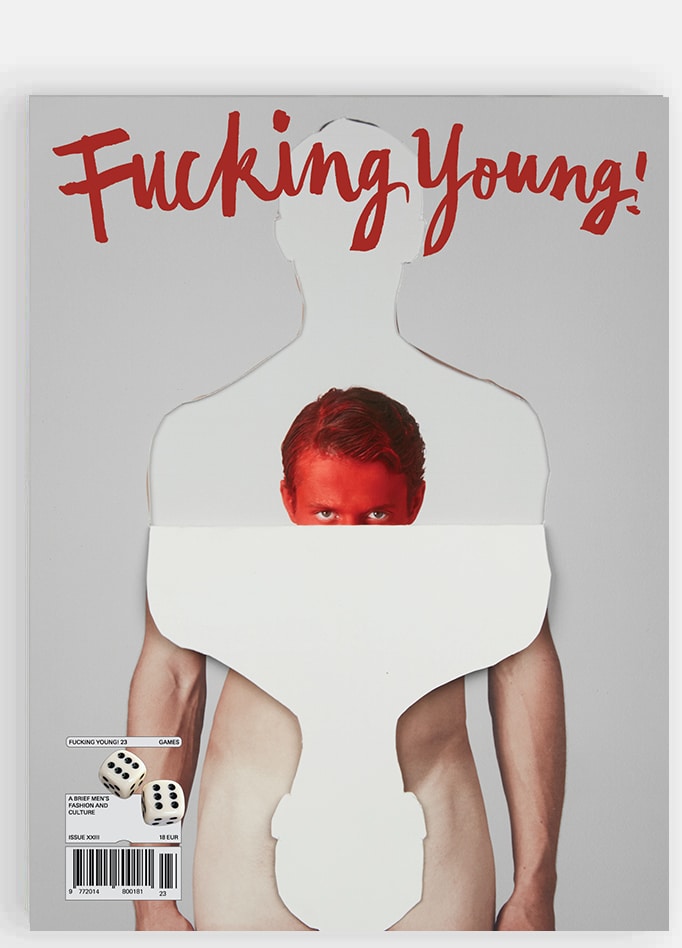The artist Leo Adef brings together six LGTBQ + artists from the Barcelona scene to celebrate PRIDE month together with BIMBA Y LOLA.
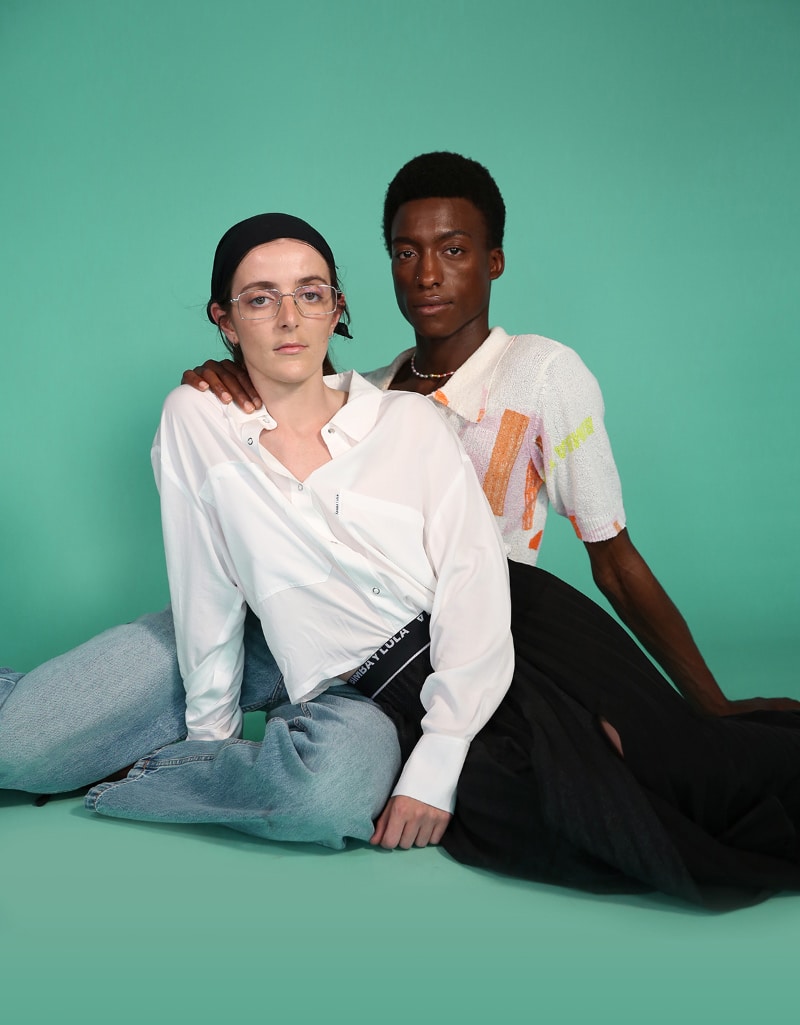
Authenticity and freedom are the best gifts we can give ourselves. By allowing ourselves to be, we treat each other with kindness and respect, and we open fields of exploration, surprise, happiness by aligning our frequency and letting what we harbor within us flow and make us unique, special, magnetic, curious. What would a world be like in which all people allowed themselves to do that?
With this idea in mind, today we bring together six LGTBQ + artists photographed by the artist Leo Adef in collaboration with BIMBA Y LOLA. The writer Vanina Bruc talks with Favela, Wesborn Simona, Samba Injai, Joac-Joaquín, Candela Capitán and Blanca Arias, about their artistic work, about their free and genuine spirit, about the importance of allowing themselves to be and expand free and how beautiful she becoming the reference they would have liked to have. In June, and all year long, we reclaim the beauty of what is queer, what is different, what is special and we talk about it with all these talents.
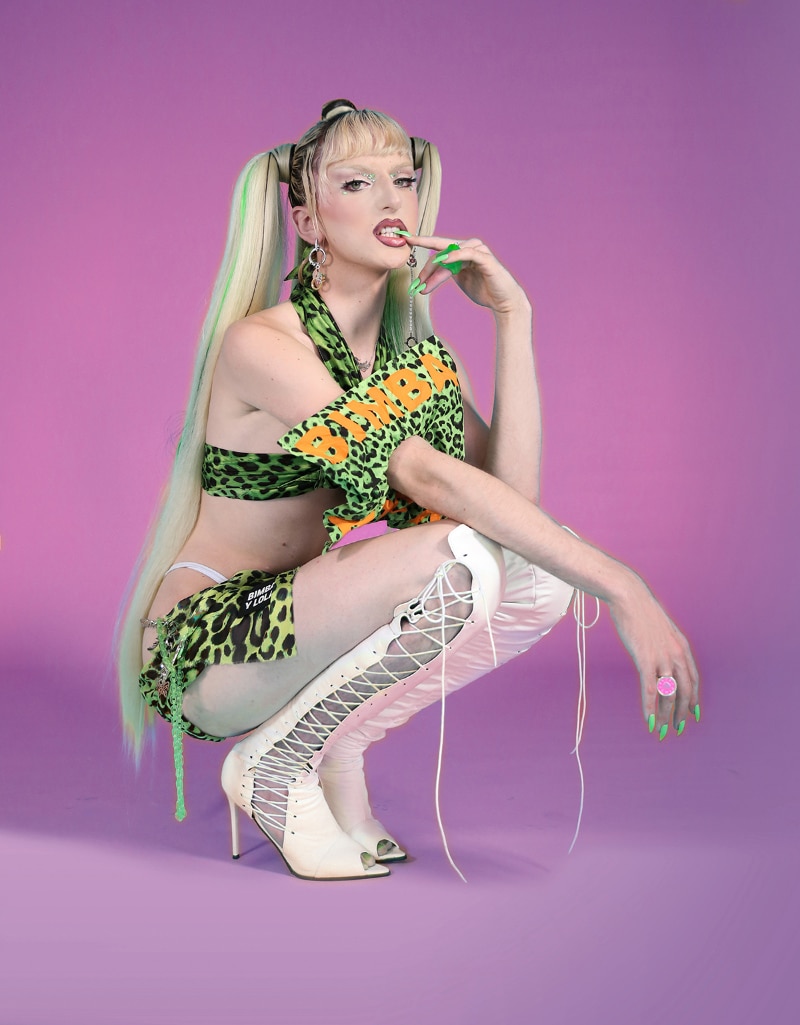
FAVELA
Your creative universe is very unique and expands in different artistic facets. On the one hand, there is the direction of films, and on the other a more performative part through drag. How do your aesthetic and imaginary criteria come together and apply in each of the areas?
For me, the two areas feed into each other and relate to each other. Each one allows me to explain a story but using different ways and means. With my “drag” I am the subject and protagonist of the story: my vision of the world and the way of expressing it are personified in Favela, I can show myself 100% free although, at the same time, being more vulnerable and always conditioned by the codes of reality. On the other hand, directing films I can approach the story from the background, seeing everything with more perspective and letting the imagination fly, since we enter the codes of fiction … This allows me to build a new world from a more analytical position, unite my experiences with those of other people, make them protagonists of our new history and put together a richer discourse that transcends.
What is your conception of drag?
For me, being a drag queen is an artistic discipline that requires a commitment to many areas that I do not touch. I consider myself a non-binary person with a dissident, flamboyant and fluctuating gender expression, highly influenced by fashion and groundbreaking characters, but that is not why I consider myself 100% drag. The way I express myself when I am more “mounted” is closely linked to my identity, and I would define it as my “maximum aesthetic splendor”, my glow up, but I do not consider it a character or a momentary character linked to sectors such as entertainment, for example. Little by little I have tried to dilute in my expression the extremes of the masculine and the feminine, which previously made me live with an alter ego, now to embody everything in the same identity whose expression is fluctuating, depending on the day and the context.
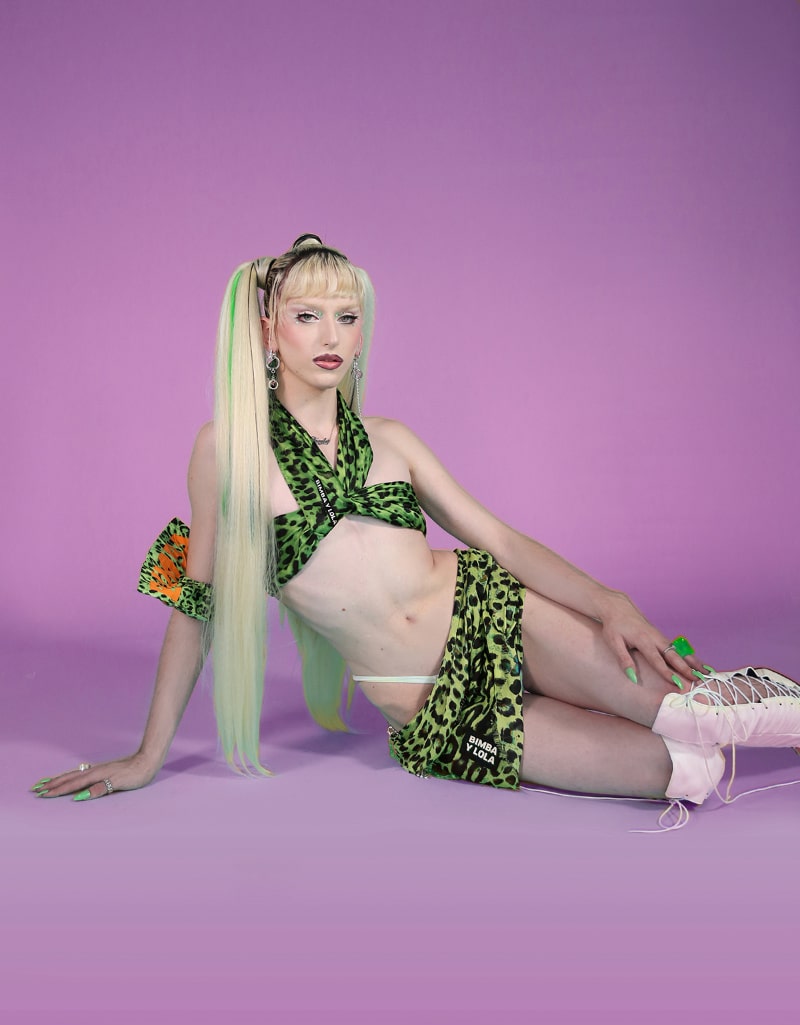
Your films are aesthetically very powerful and the concept of the alien is very present. Is there a conceptual connection between queer and alien for you? How do you put those two ideas together?
Interesting! If we understand the alien as a subject that comes from another planet, it is true that the characters in my projects tend to share that idea. In the end, queer is still an alternative vision to the cis-straight norm, and although I hope that this will change in the future, in one way or another it is still a dissident way of life and belonging to a minority sector of society. I really always felt quite alien until I started meeting people and spaces with the same concerns as me regarding gender expression.
Growing up as queer kids, a large part of our childhood is hiding who we are and our adult life is getting away from it and being it for real. Have you experienced any similar evolution of expansion and embrace of your authenticity?
Totally, my experience boils down to this. Throughout my childhood and especially adolescence, I grew up between reality and fantasy. I physically lived a life in which I did not fit in, I did not represent myself, I had not chosen it and every day I imagined being able to become “that person” that I was unable to bring to light. In the beginning, it is true that building my drag alter ego, in hiding at the age of 17, was a brutal escape route for me, later on, I was on the verge of initiating a transition, but finally, I realized that my identity was not you could settle for just one of the two extremes. I had been hanging my head for too long to avoid “problems” until I got fed up and said to myself: no more lies, enough excuses, raise your head and fly high, prioritize your own happiness, and fail no more! Here, I have to add that directing my own films / photographic projects has also helped me a lot; capturing all the fantasies and images that I could ever project into reality is one of the most rewarding sensations I can feel.
Our queerness, our particularity, our rarity makes the world a better place, a freer place. What do you think about that?
Nothing more to add! And we must continue fighting to live in a safer place, where all its inhabitants see us, see each other and feel free to express themselves without fear. Who is interested in living in a flat, gray society? It is something I can never understand.
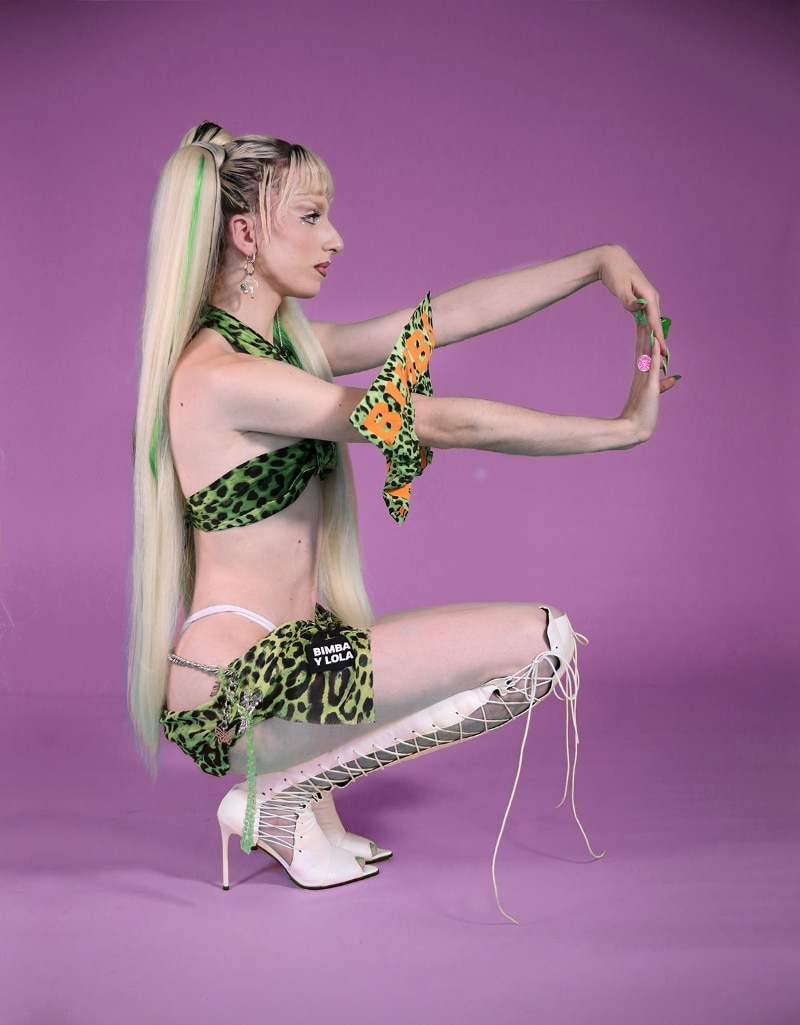
In “GEMINI” you narrated a non-conforming gender relationship, inspired by Dovima Nurmi and Naomi McMenamy, in which there was a lot of symbology to explore that break with the imposed, with the supposedly acceptable and established. Could you tell more about your perspective regarding the questioning of patriarchal and archaic models?
It is important to always try to fight to see beyond all the inputs that come to us. Turn them around and ask ourselves how everything would change, even betting on living it! It’s the best thing that could happen to us … And, most of the time, daring to make these changes creates a gap with “what is imposed” that will result in something positive for us and for others. That is what I wanted to portray with GEMINI, because after all, Dovima and Naomi are two people who inspire me with that energy from the day I met them; I saw two souls united in the face of any adversity, ready to do anything to move forward together, be the best version of themselves and leave their mark on others.
What are your main references?
People who do what they want, when they want and how they want. As long as they respect others, of course. Mainly my references have always been female figures, brave, groundbreaking, shameless, and daring. I am very attracted and inspired by people, and here social networks have helped us a lot! We can access characters whose existence would have been inconceivable in our lives years ago. In short, I love going out and seeing/learning about different realities, origins, and stories, especially at night when people feel freer to express themselves. There is something magical and very authentic in the night, like Gaga’s song, I’m gonna marry the night…
And finally. If you had to come up with a set and a concept to explain who Favela is, in a couple of ideas, what would it be like?
I love this question. I think I would make a main set that starts out almost empty, attached to the end of a giant pendulum that fluctuates between two other sets that each represent one extreme of the genre; femininity and masculinity. Little by little the character inside the set would take elements from each of the extremes when they come into contact, with the burden of not falling from it because he wants to take too many things. This is how the piece would progress until a main set was built, totally homogeneous and dissident, which, like armored armor, ends up loading everything that is around it.
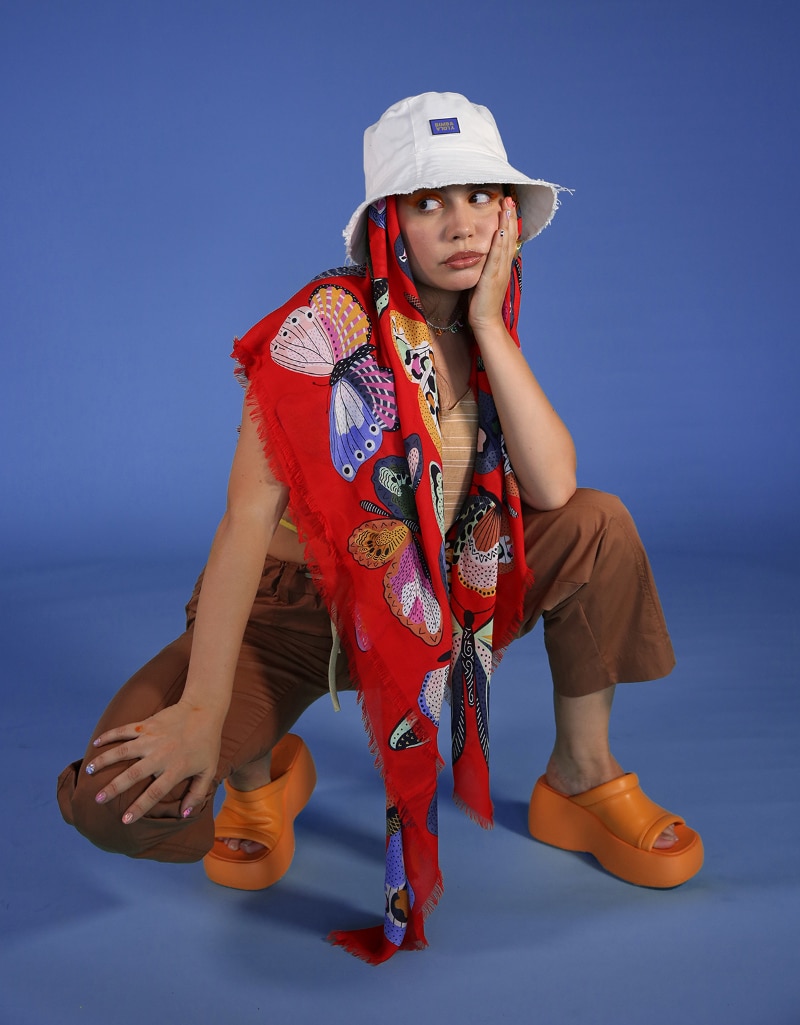
SIMONA
I have read that your music defines a collage universe. As I don’t usually categorize, I prefer to ask artists about how they define their own music. How would you say your music is?
My music is like my life, sometimes I don’t even understand it, but I do what comes out of my heart. I feel that this collage comes from there, unites is someone different every day, one day you identify with something and the next you no longer, and your art is mutating with you.
What inspires you when creating?
I am very inspired by everyday life, simple things, my friends, my room, going for a bike ride, listening to a song that I like in a loop, the sea, looking at photos… I am also inspired by heartbreak (laughs), that’s why I fall in love and I fall out of love all the time.

In your songs the concept of friends is very present and the importance of bonds and enjoyment with them. What is the concept of friendship and chosen family for you?
For me, friends are the family that one chooses, the people close to you and who do not judge you, who accompany you in your processes, who know how to understand your silences and your intensities… For me they are the most beautiful bonds to cultivate. In my world, my friends are my muses, they teach me, inspire me, they are my biggest mirrors. I think that within all this romantic love they have always placed the couple as the most important bond to cultivate and, for me, love with friends is much more genuine, more true because we do not love them in a romantic way, for at least in my case. With them united you don’t have this feeling of exclusivity or belonging, or at least that’s what we try (laughs).
In a context in which we are becoming freer and freer and we understand that we should not feel shame or guilt for being ourselves and genuine, we find ‘A Better World’. What does this mean to you and how do you understand the power of being unique?
Being unique is not judging yourself, it is being able to live calmly, be different every day, get away from the gaze of the other, put yourself as the real center of your life, and understand that your decisions are yours and that, after all, they are the only they influence you. No one can get into your struggles, sufferings, congratulations … As long as you join the military, your own happiness without messing with others is all right. Let’s enjoy ourselves, let’s get rid of blame and prejudice and the universe is going to be a more beautiful place for everyone.
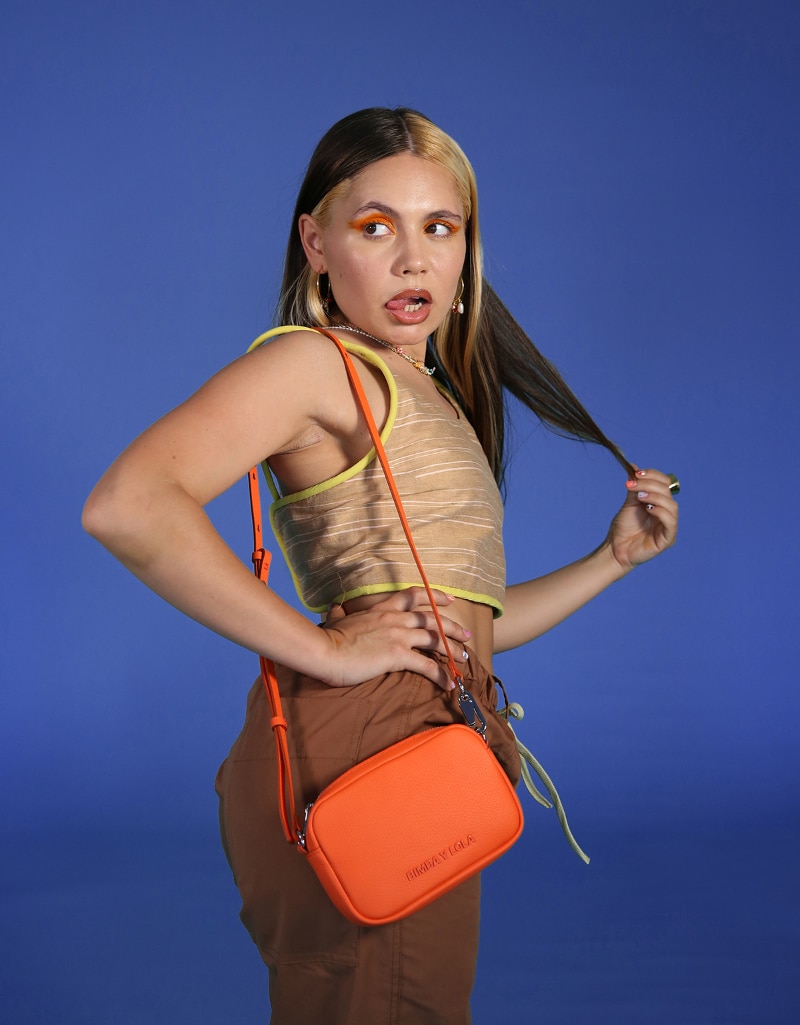
In addition to healing and self-love, you also talk about the horoscope and how it defines parts of our being. Do you consider it as a way of self-knowledge, of exploration?
I consider many things a way of self-knowledge and exploration (laughs), including the stars. I feel that it is nice to think that not only human things govern us, connect and transform us, I think that the universe is very extensive and we have thousands of connections between us, nature … We are a great ecosystem where the human has become the center, but it is not like that, that is why I feel important to pay attention to the stars, the earth, the plants, the animals… Perhaps if we had a more inclusive consciousness in every sense, everything would work better.
Do you dream of something you can tell us?
I dream of being able to make art my whole life, to be able to make a living from it, and find ways to do it in a conscious and dignified way for me. May all the people I share my work with feel a lot of love for what they do and thus inspire and empower each other.
What plans are there for SIMONA?
Lots of music, making songs, playing live and, if all goes well, an EP at the end of the year for everyone to sing and dance in panties at home.
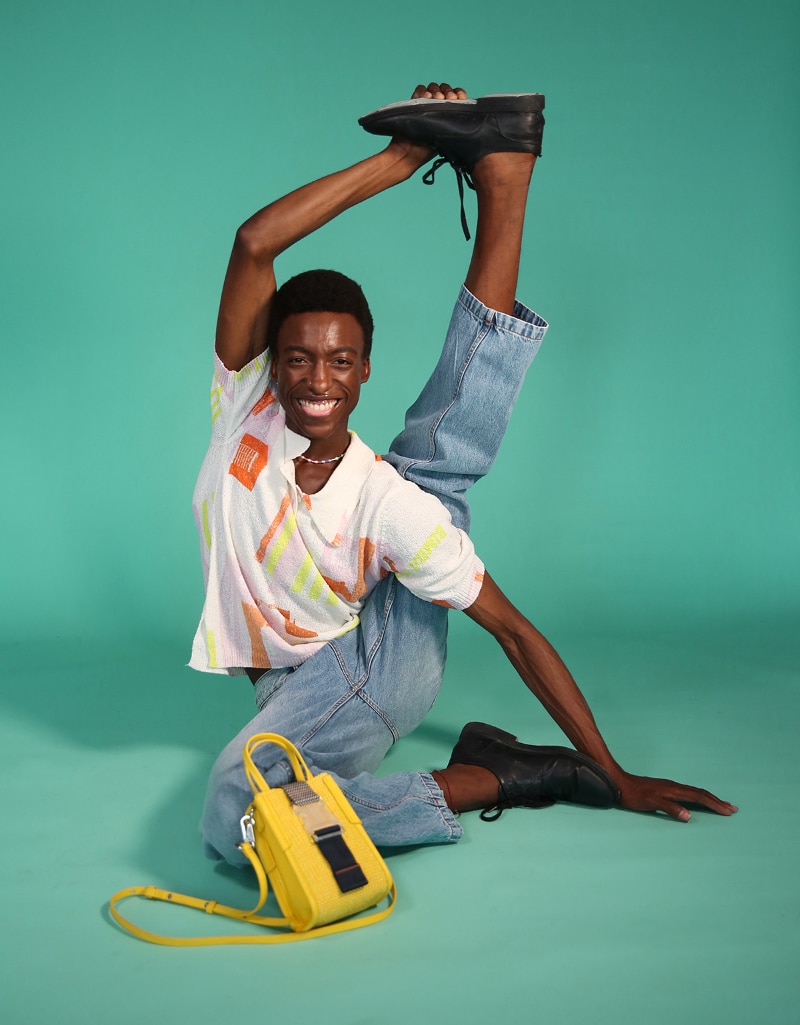
SAMBA INJAI
You are a dancer and voguer. How did you start in dance and did you discovered voguing?
Dance has been part of my life for as long as I can remember, I am a professional ballet and contemporary dancer but I have always liked other types of dance such as voguing, hip hop, African dances … The first time voguing appeared to me was going out at night, and I observed people around me doing it with confidence, with freedom, and with love in their movement. That’s what dance and voguing are all about
Voguing has a very powerful history and its origins are rooted in individuality and the chosen family. Is there anything about what it means, beyond performativity, that you like about it?
Something particular that I like about this dance is how there is no limit to what you can do. You can be yourself, dress how you feel with more confidence, and express your emotions easily. There is something about the community and about voguing that makes it special.
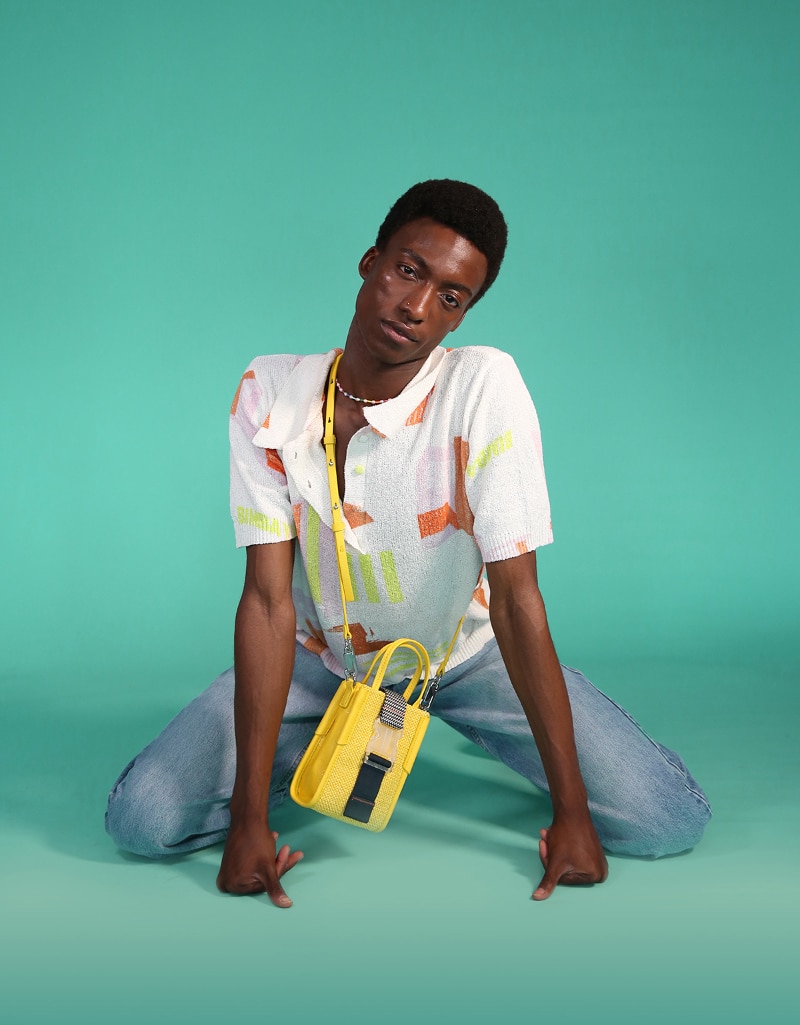
What are your references and influences on the way you express yourself creatively? You dance and move in such a light and delicate way that it is beautiful to watch.
During my journey, I have been inspired by different artists but for the moment I am influenced by what is and who is around me. I have met beautiful and talented people here who make me a better artist and person. As a dancer, it is important to observe others and learn, this is how your art becomes more complete. One performer/artist /dancer with a positive impact on me is Candela Capitán.
You competed in GOT TALENT PORTUGAL in 2018. How was that experience for you?
I am very grateful for my experience at Got Talent Portugal even though it was a hard time for me. I had the support of my foster home and my friends and family. On the day of my audition, I remember arriving on stage, watching the judges, and feeling nervous. I completely forgot what I had prepared for the audition so I improvised, letting my body and soul follow the music. Although I was criticized by one of the judges for improvising, I felt good about my performance because it was real.
Our kindness, unique character and queerness make the world a better place. How do you feel about that?
It’s basically a Better World! With this in mind, I’m more able to explore self-acceptance and freedom in a way that begs to be shared. It represents a world in which people are not afraid to be who they really are, regardless of whether that sounds good to others. It’s also about healing and the journey and journey that comes with being queer and overcoming internalized fears and trauma. At its core, it represents the queer community and the vast spectrum that inclusivity may or may not represent. For me, it is a message of love and empathy that shows us that the true beauty in queerness lies mainly in the beauty of understanding not only others but also the unique thing that is inside us.

Do you have a dream that you can share?
One of my dreams is to create a dance school in my country Guinea-Bissau and share my passion and knowledge. I want to become the best version of myself and an artist, to be a good dancer with an impact on others. Hopefully, when I have a more stable life I would like to bring my brother, who suffers from a rare disease, to live with him, take care of him and give him a better life.
As queer and dissident kids, we tend to hide and at a certain point, we start to shine because it is inevitable. Do you ever think how your child self would feel to see you so bright and proud?
Looking back, when I was very little I did not feel the courage to be myself, and I am still in the process of learning and accepting who I am. The 10-year-old Samba would be very proud of me now because step by step I am discovering myself, my goals, my path. And I remember when I was in my foster home in Portugal, ‘Casa Das Conchas’, and we celebrated every birthday and they showed me pictures of ourselves from when we were younger, and I was a boy who loved to play with Barbies, dress up in clothes from woman… I was very scared that people would see those photos thinking that they would judge me, that they would bully me, that I would embarrass my parents. Today I can say that the small Samba was the real Samba. So yeah, I know my 10-year-old self would be very proud.
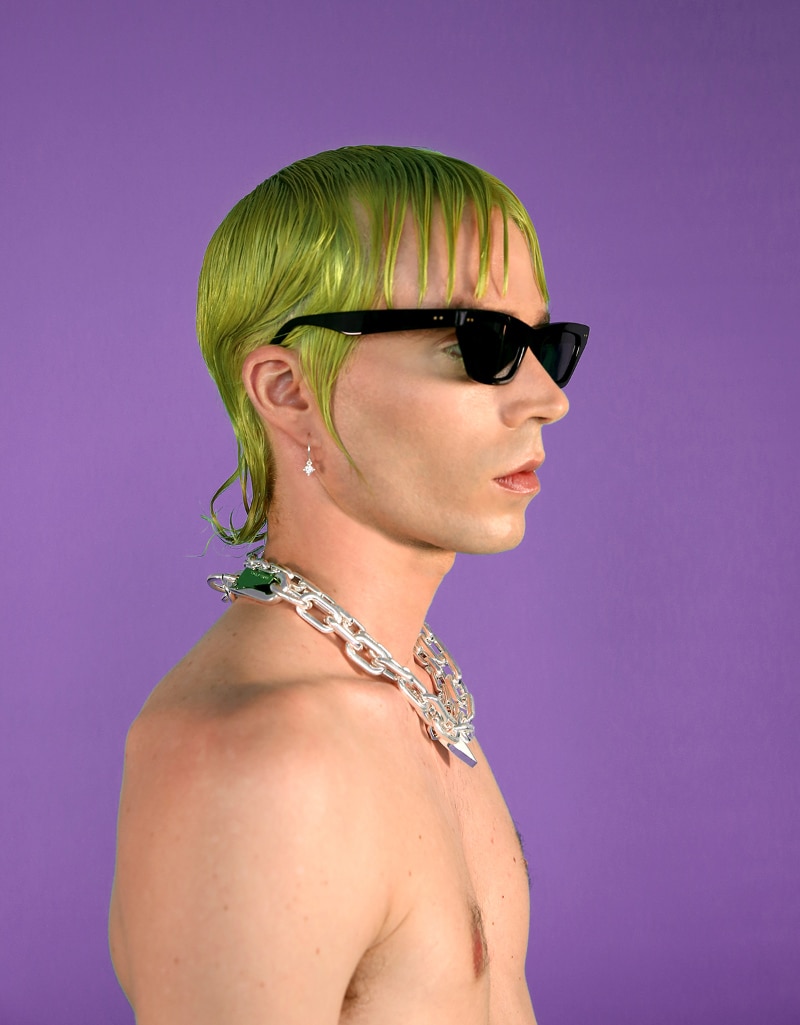
JOAC
Your main means of expression is photography, in which you immortalize situations and imaginaries that are interesting or stimulating to you. What is the art of photography for you, and how do you conceive of capturing and reading through your eye different layers of reality?
From my point of view, photography is a way of immortalizing moments or situations, where an expression, a look, or an action can capture the attention of who is going to look at it. Also, many times what is portrayed is not exactly what was happening at that time, which seems interesting to me since only whoever took the photo really knows what that situation or moment was like, therefore whoever has the camera will give their point from a personal point of view and you are going to decide what you want people to perceive of what has been portrayed.
In your work, there is an editorial and there are also portraits of real situations, of intimate moments, of celebration, and of partying. How did you start to narrate what you saw and what inspires you to do it?
From a very young age, I was interested in portraying moments in my life, I remember that at the age of 11 I took an analog camera on a school trip and so I “played” with photography for many years until in 2018 I decided to take a photography course in fashion where I began to have more contact with the publishing world and that’s when I began to mix fashion photography with real situations that I lived at parties or simply portraying moments from my travels or from day-to-day. As for publishing, I like to do it because I can invent anything that comes to mind and recreate it through looks or actings and be able to count on that. Regarding the diary, I like that they are moments that I will always carry with me and I consider myself a quite nostalgic person so in a few years I will look at that and it will give me life.
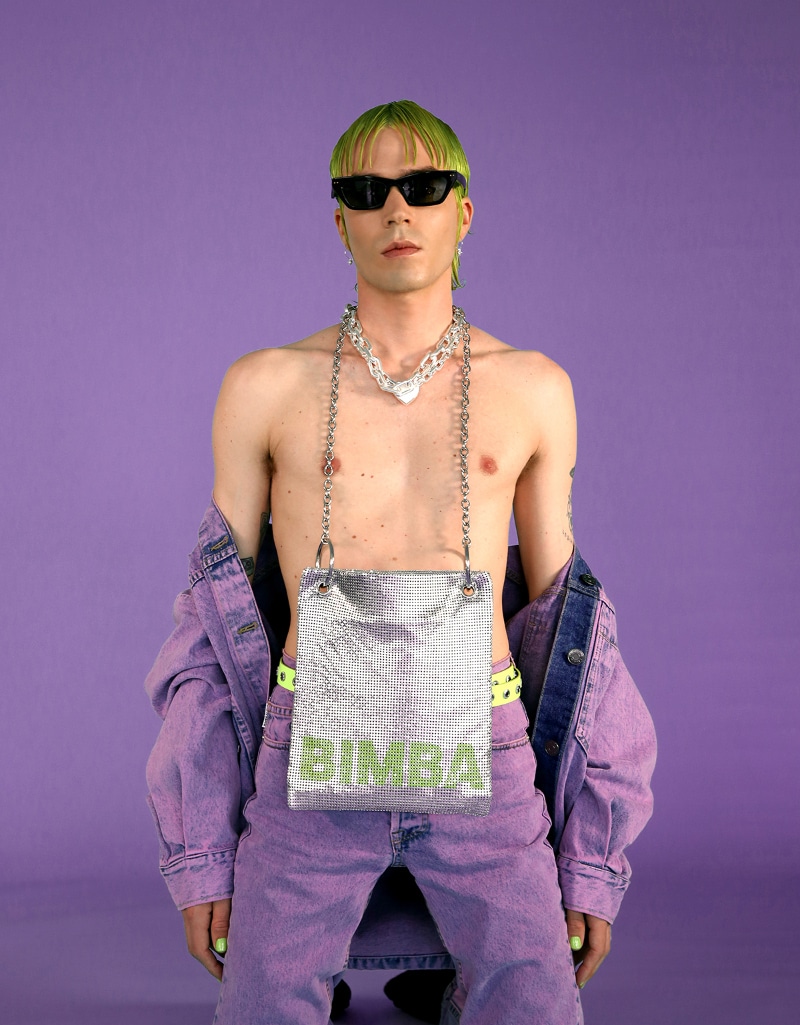
Your photographs, the styles, the people who appear in them, are very clear in looks and attitudes in terms of being a self, being genuine and questioning things. This definitely makes the world a better place. What does this mean to you and how do you interpret that message of freedom?
I believe that it is essential for me to be authentic, free, and genuine. I am aware that there are many different realities in the world and I have the privilege of being able to express myself as I want and have freedom when choosing what I want to do, who I want to be, or with whom I want to be, so from my place, I think it is It is important to express that and that the message can reach people who can read it and learn from it. It also happens to me that having grown up in the 90s I have missed many references in my childhood and many years of my life I thought that I was the “weird” and that I was not well, so it seems important to be able to show a message of freedom and an encouragement for those people who perhaps feel alone and lost in their reality.
What are your references and main inspirations?
What inspires me has been changing or evolving over the years. I try to have a fairly wide source of inspiration by looking at fashion films, movies, series, magazines, or photography books. It also inspires me and I take many artist friends as great references.
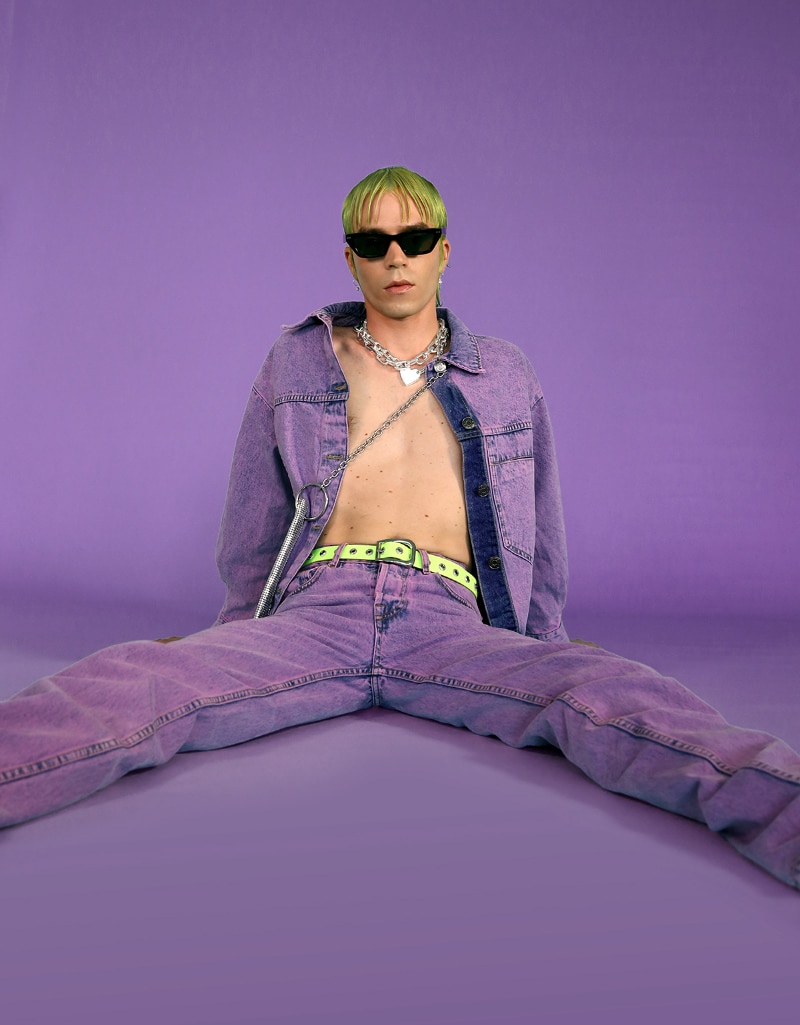
What would the party or dream circumstance be like in which you would like to be to portray? What does it feel like, what do you see?
I imagine a party in a forest, next to a lake, where I can dance with many people around but also have the possibility to explore and lose myself there and why not swim and relax in the water. It would be cool if there is also a small closed room with darkness and lights that make me see incredible images and thus have everything, nature and sweat.
Do you have a project that you can tell us about?
Several months ago I started designing clothes, I am still in an experimentation stage but I hope that in the next few months this project can be ready to be launched.

CANDELA CAPITÁN
As a dancer, performer, and choreographer, you work with dance and the body as the main tools. How did you come into contact with these disciplines and how was the process of consolidating them as a means of artistic expression?
I have been studying dance since I was four years old, it has been a process that has always gone hand in hand with my life, there has never been a moment when my work tool has been separated from the body. So I haven’t really had a process of anchoring it. What I have been discovering over the years is the infinite options that the body has, it is not only a tool for dance, it can be included in all other artistic disciplines.
You have a personal imagination, with which you have worked on projects with different brands or participated in festivals such as LOOM. When you are faced with a proposal or challenge, what is your creative process like? What inspires you?
I am inspired by my colleagues from the living arts, the elderly and the young, those from dance, filmmakers, writers, those from the visual arts…
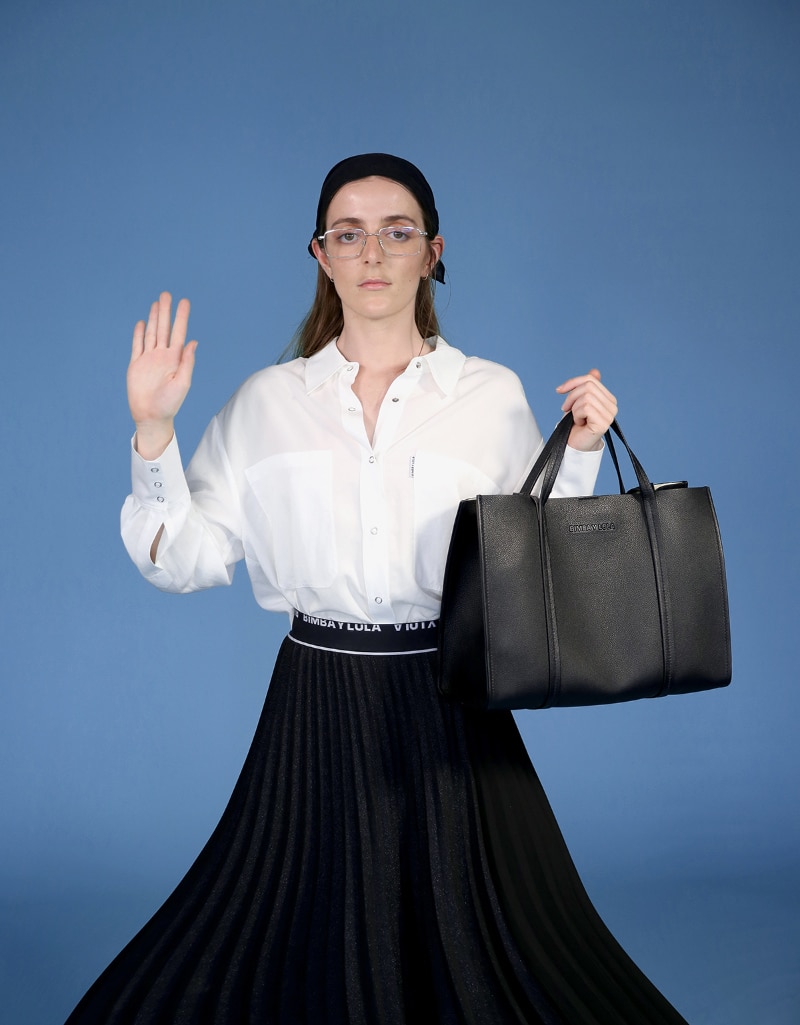
In addition to collaborating with external agents, you also have your own personal projects. “Mantis, three hours of coffin” and “THE DEATH AT THE CLUB” catch my attention, two performance pieces in which you take your body to the extreme for long periods. What is the concept that moves you after that?
In these works the limit of the body, the limit of dance, and in one way or another the limit of the public are worked on. I understand the limits as working with the eccentric, rethinking the borders that are established in the academy, in society and in oneself, to unite everything and have the option to take from where we need it.
How do you feel about allowing yourself to be?
The more we are different, unique, authentic and personal, the better the world will be.
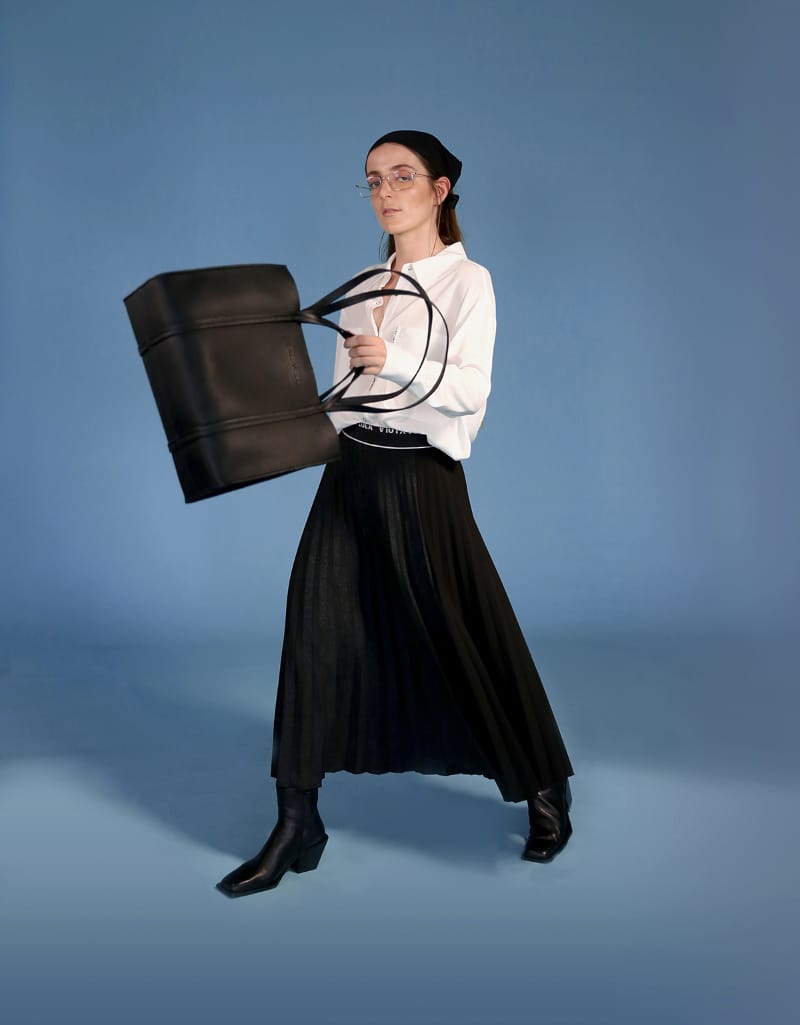
In your work, you combine the physical with the musical and the visual, as an opening between disciplines. How do you understand contemporary dance and the fluidity between arts?
The technique of each discipline serves to be able to delve into it and then decompose it, deform it, manipulate it, cancel it, chew it, multidisciplinary and transdisciplinary it.
Is there a project or dream that you have that you envision that you would love to participate in or produce?
CULTURE IS NOT CANCELLED. That my entire community is working again (at least) as it was working before the COVID-19 pandemic.
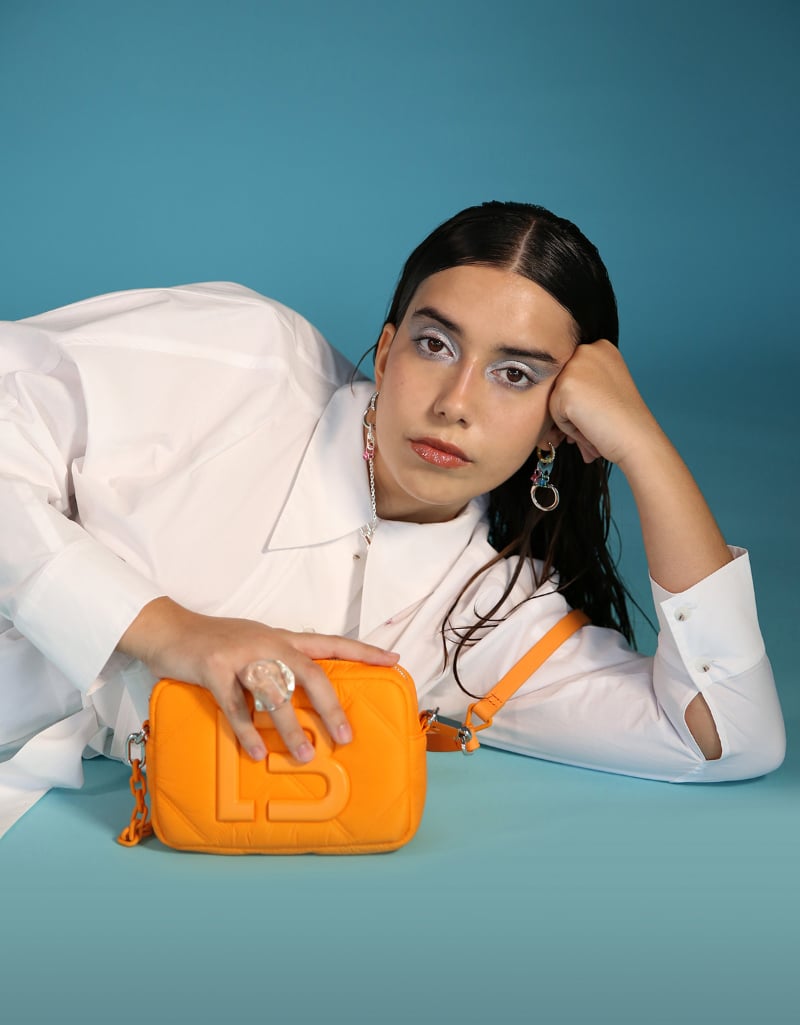
BLANCA ARIAS
You define yourself as a multidisciplinary artist, art historian, witch, and dyke. In your work, it is possible to observe references of all those things. How would you define your inspirations and the elements that have shaped your imagination?
In reality, what runs through all my artistic-academic research is a concern for the body in relation to visuality. From this main thread, I am weaving a network of references that allow me to delve into the issues that I want to develop at all times. Although these vary, there are some lines that always accompany me: femininity as resistance, its link with vulnerability, myth as a space of escape and intimacy, witchcraft in connection with the construction of subjectivities and counter-normative knowledge … Expand my Bollo-imaginario in other temporalities or geographies allows me to play speculative thinking hand in hand with science fiction, to think about how we could potentially live and relate if we did not live and relate as we live and relate.
You work with 3D design, text, conceptualization, creation of fictional and video worlds. How do you unite and branch your facets? And how is your creative process?
For me it is a fairly organic movement, jumping from one facet to another because in the end all of them are just different ways of articulating and materializing my discourse based on the text and the image. Honestly, my creative process is quite uneven because I can only start something when I am emotionally ready and have enough time for it (which are two quite exceptional requirements, come to think of it). But what usually works best for me is to find what I want to communicate, to generate an unrealizable project idea – to make a maximum proposal – and then to ground it to the plane of the possible. In this process, the dialogue with my friends and my partner helps me a lot because I am very good at dreaming big but very bad at thinking of feasible solutions.

In your piece “Bolloisla”, you create a space of matriarchy and feminine energy far from masculine violence and based on kindness with each other, understanding, emotional responsibility. It has reminded me of the worship of the Great Goddess and the matriarchal cult that existed before the martial peoples established patriarchal society as we know it now. What does this lunar energy drive mean to you and how do you conceive it in yourself and in your work?
Bolloisla is a utopian fiction free of male cis-straight violence in which I propose an approach to femininity as a synonym of vulnerability, of radical openness to mutual affection. Not so much with the desire to build a social model based on matriarchy or matrilineality (because it is difficult for me to think these ideas outside the theoretical framework of sexual difference), but to think of ways of caring for ourselves linked to decentralized, rebellious, that is clearly related to the stories of anti-patriarchal and anti-colonial resistance. It is about enabling the life of dissidents, not only our survival, and for me, a strategy for this is the recovery of all these illogical, anti-phallogocentric forms of knowledge and approach to the world, which allow us to understand each other in horizontal relationships, as part of a whole (as children of compost, as Donna Haraway puts it). Now that we are quite skilled with deconstruction, now that we know how to detect the structures that oppress us, I believe that a re-mythologization and a re-enchantment of our realities are urgently needed to generate gaps where life is livable.
Understanding ourselves makes us be kinder and we make the world a better place through that authenticity. How does that message connect with yourself and your thinking and work and how do you feel about it?
I believe that honesty is important, but I am also concerned about the tension between visibility and exposure. We are witnessing a media boom of counter-hegemonic identities and I think that this is a double-edged sword. On the one hand, it is quite hopeful because this supposes the construction of a pantheon of references for generations to come, we are the embodiment of the possibility of being queer in a world that is always hostile with difference. On the other hand, I am concerned that we are being overexposed without the guarantee of protection in our clash with the norm. I talk about this a lot with my music partner: you can’t program a queer person in a room to be modern without making sure the environment is safe for them, that the staff is going to use their pronouns correctly, that when he goes out into the street he will not be a victim of the same violence as always. Without repairs, visibility is simply exposure.
In one of your pieces, you talked about how desire, in addition to gender, is also a construction, and about how trying to exist in labels can make us lose information about ourselves or reduce our expansion or possible links. Could you tell me more about your perspective on these questions?
I am still very surprised that we are able to recognize that gender is constructed, but when we speak of desire it is as if we suddenly became essentialist, as if our sexuality were pre-discursive. By this, I basically mean that heterosexuality is not a preference but an institution. Heterosexuality is a socio-political regime that is responsible for the systematic (re) production of the national body. It is not given to us as an option but as the only way to establish affiliations, as the path of good in opposition to the deviations of evil. I define myself as a dyke in a strategic way, but my desire is fluid, away from the genital/physical limit. What is important to me is the centrality of care and emotional responsibility.

What were your references growing up, and what are they now?
I think the moment where I started to build my altar of references was when I embarked on the theory. Reading Monique Wittig, bell hooks, Paul B. Preciado, Audre Lorde, Judith Butler, Donna Haraway, Octavia Butler, Gloria Anzaldúa or Itziar Ziga was very liberating for me because for the first time I had the sensation of finding myself in the words of others. And of course, a great reference for me are my friends, especially those who are part of an invisible community, of a silent revolution that opens cracks in the cisheteronorma from art and not so much from activism.
Do you have a project in hand?
The truth is that I have never had so many projects on my hands. I am working in 4 cultural institutions at the same time and obtaining a master’s degree in Comparative Studies, but the highlights right now are that this month I have curated activities for two museums in Barcelona (the Miró Foundation and the Archaeological Museum of Catalonia) as part of a program of rereading in a queer key of its collections. I have other little things that I can’t move on yet, but these months will be strong. <3
